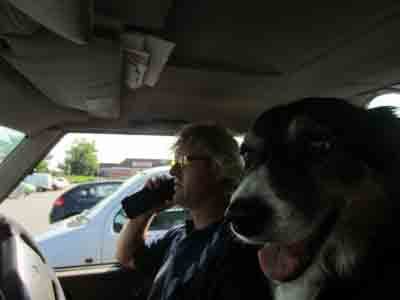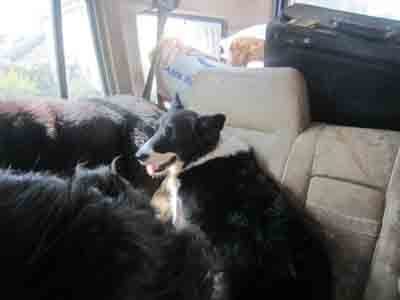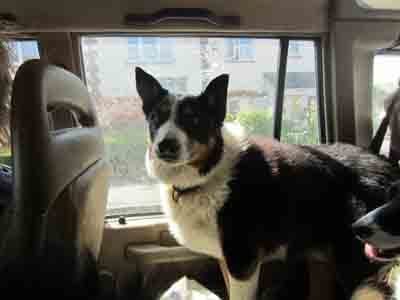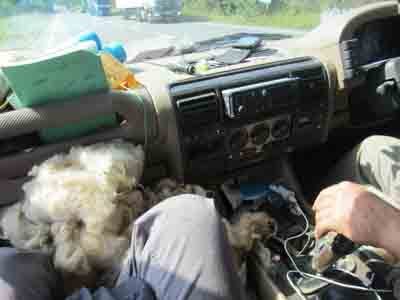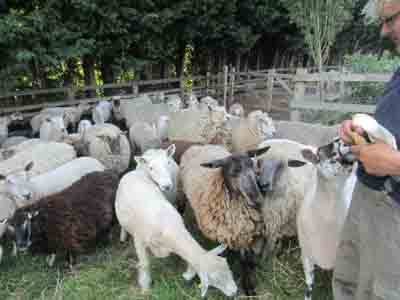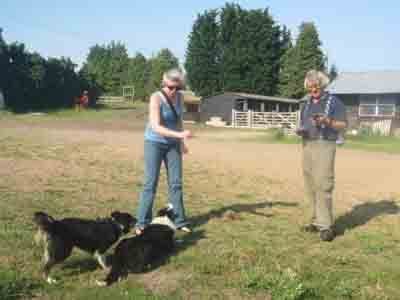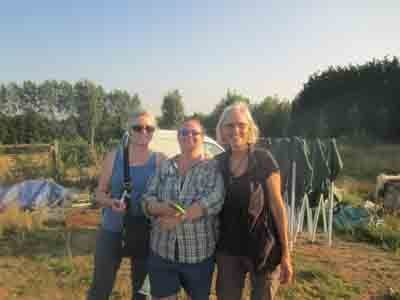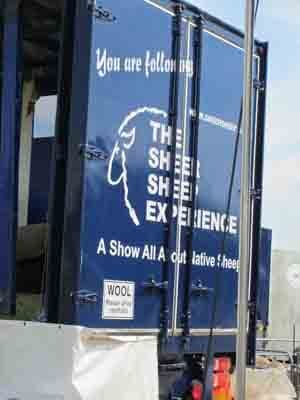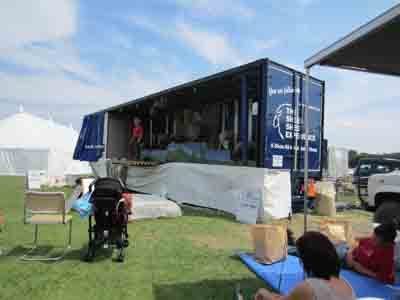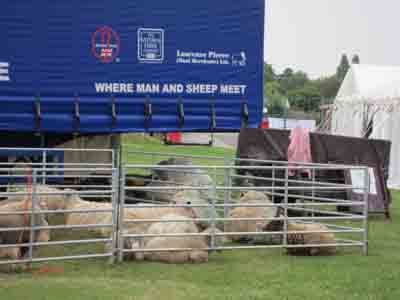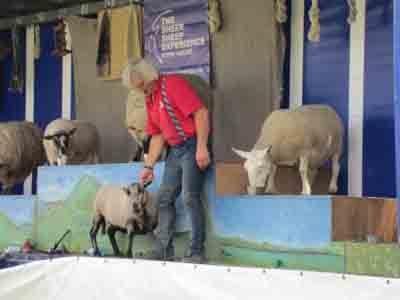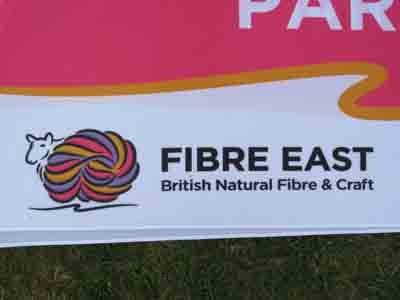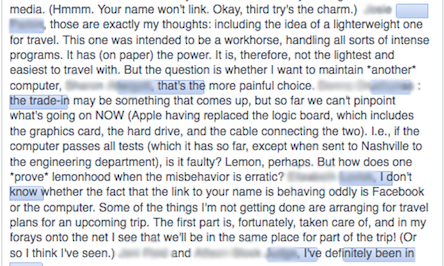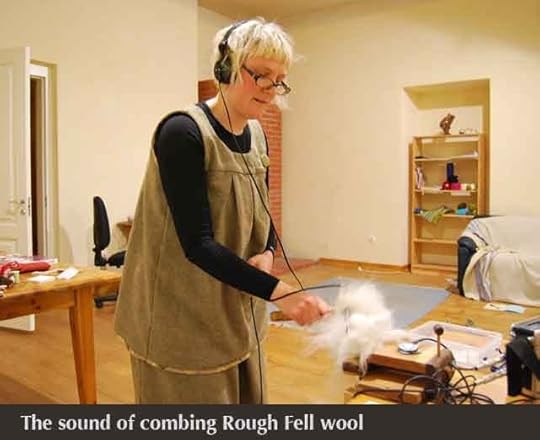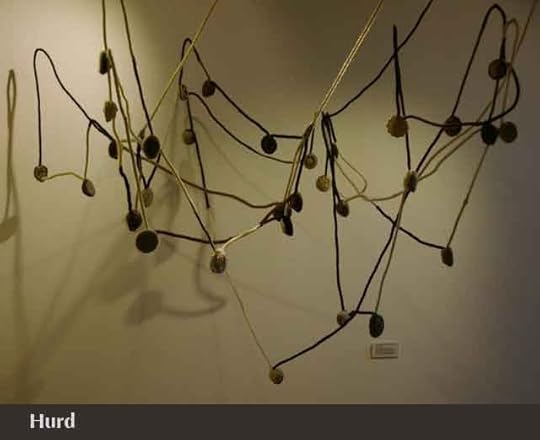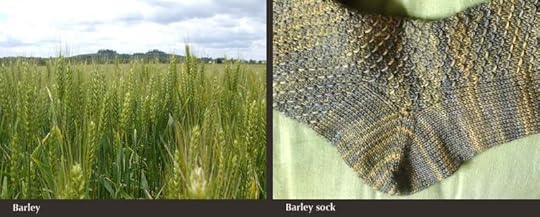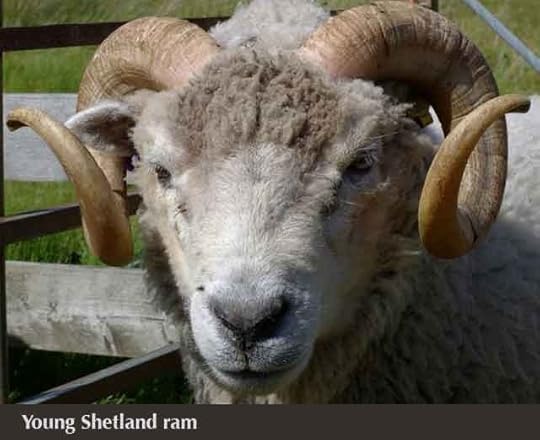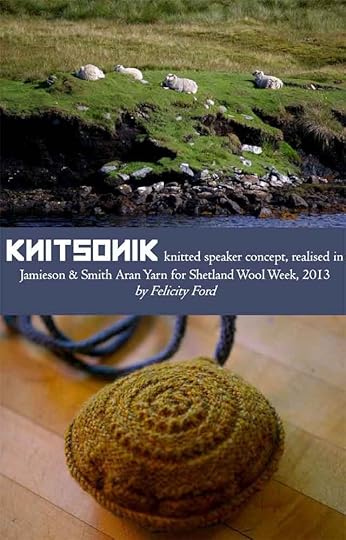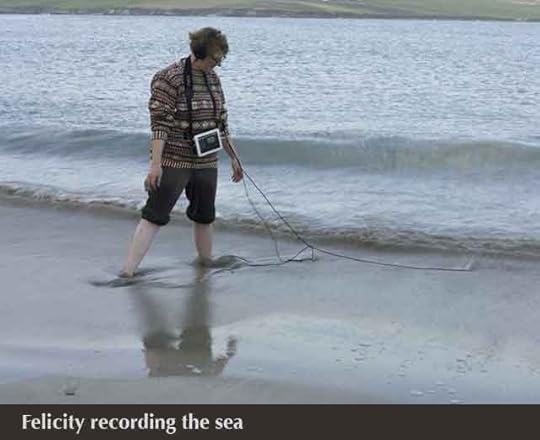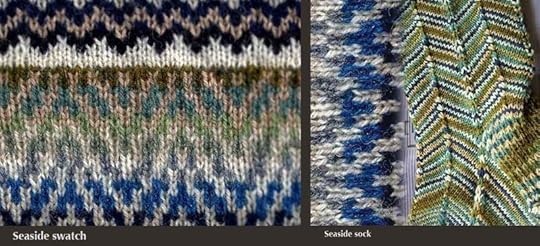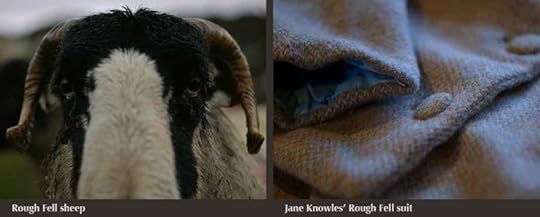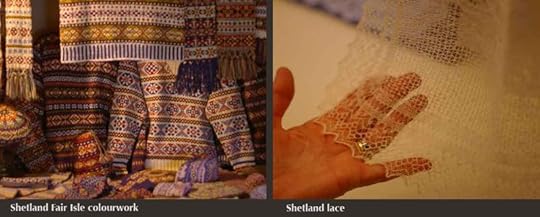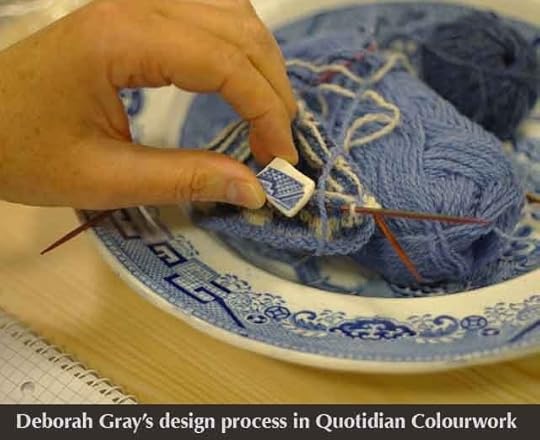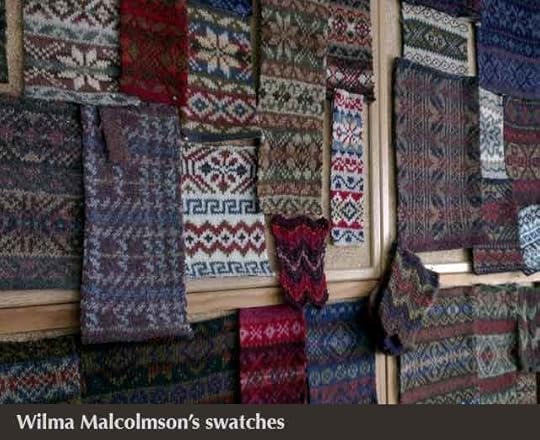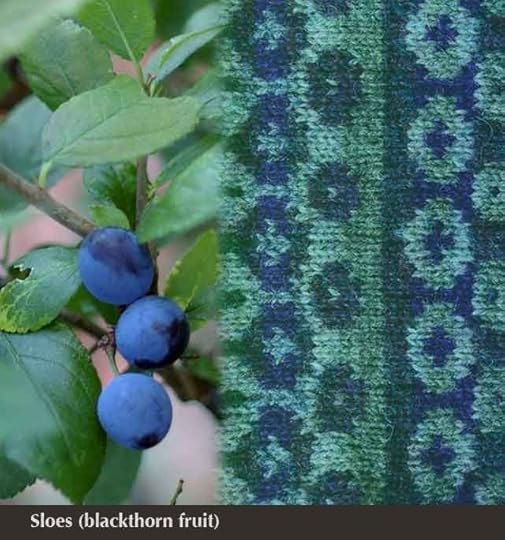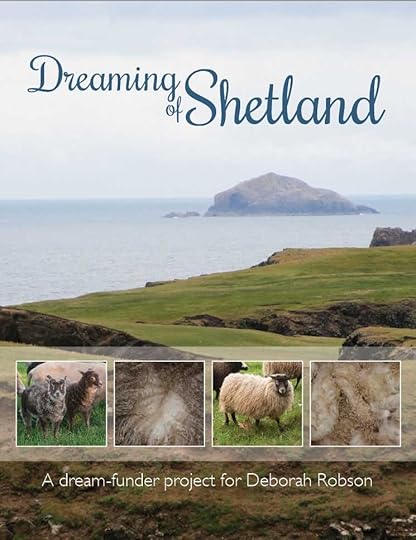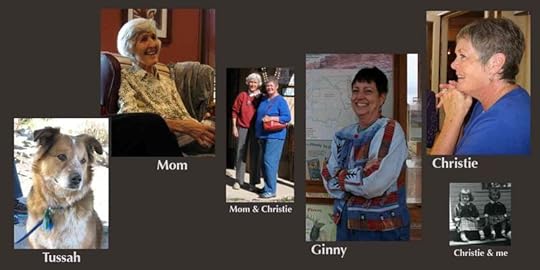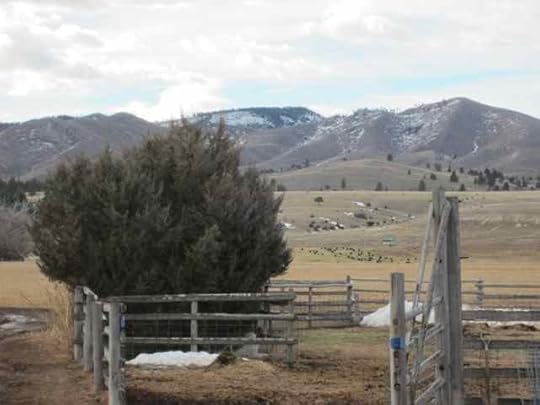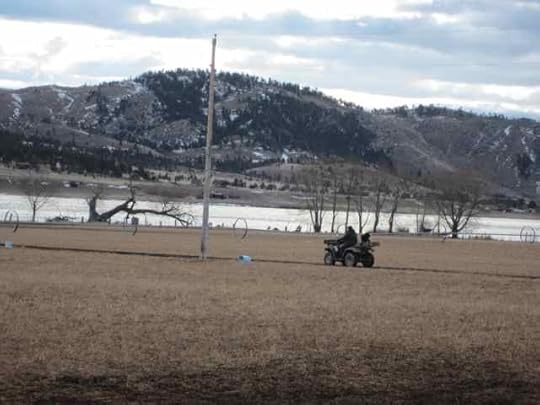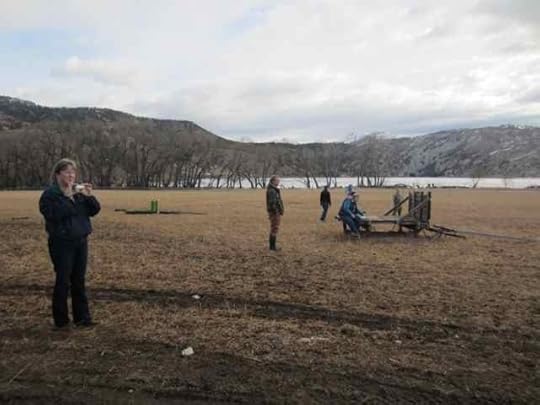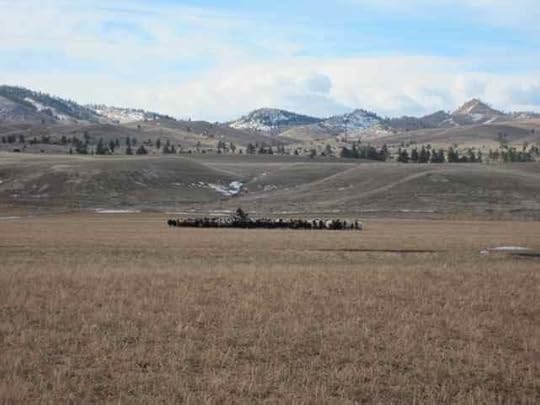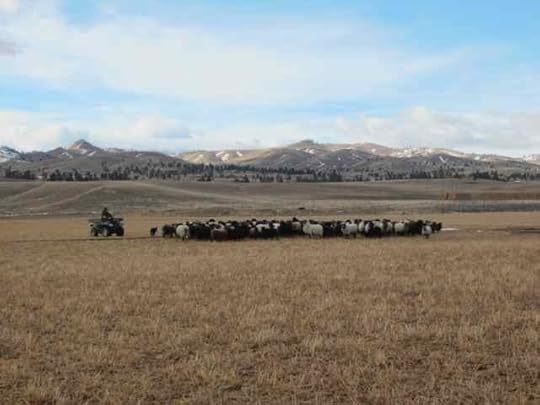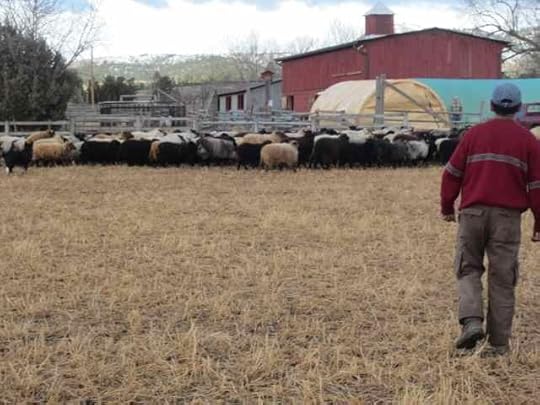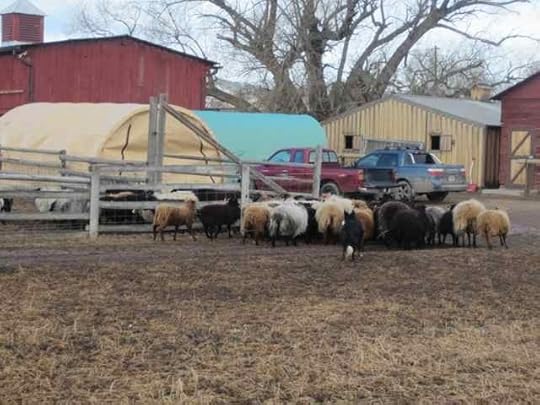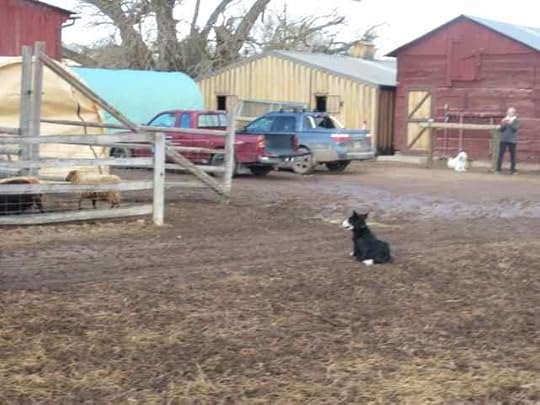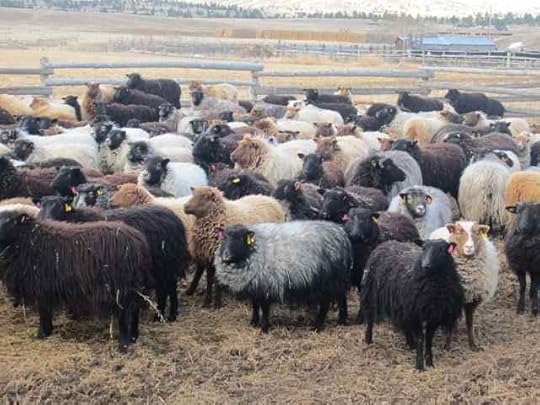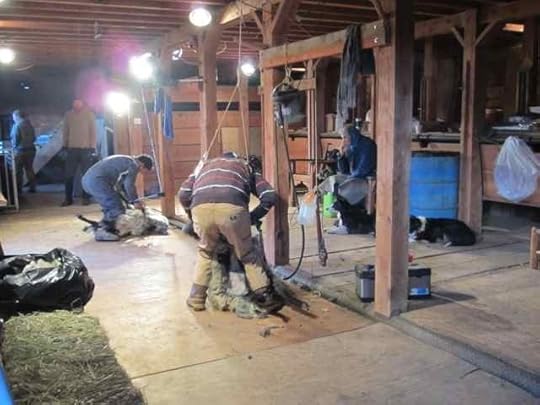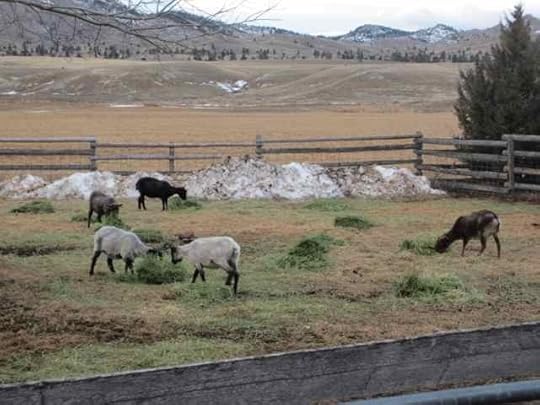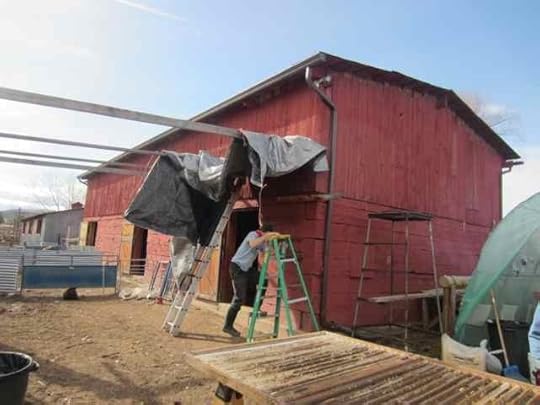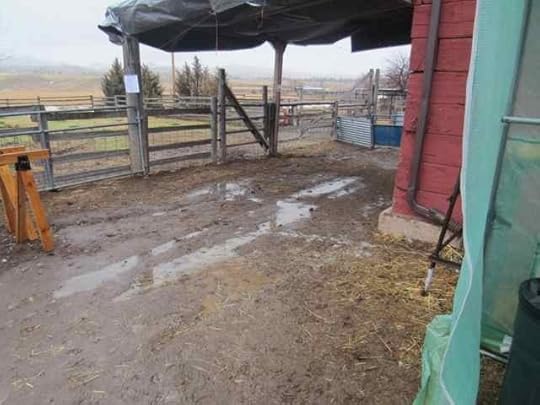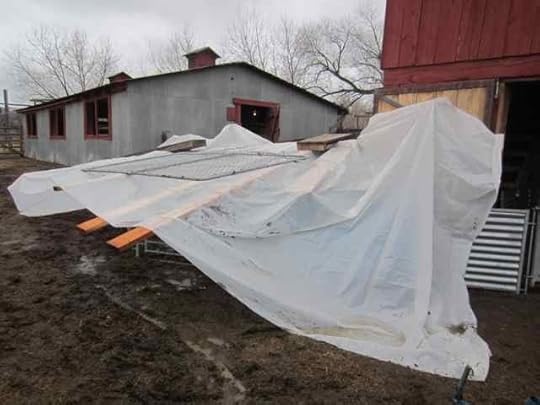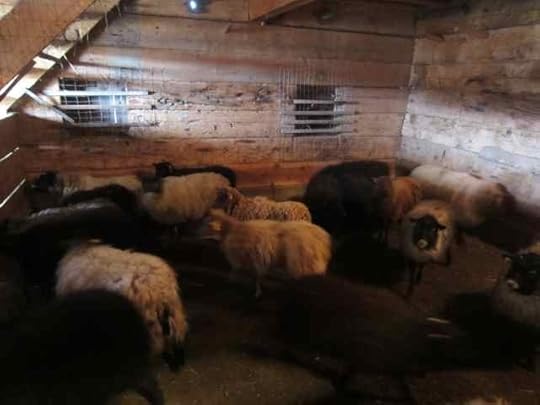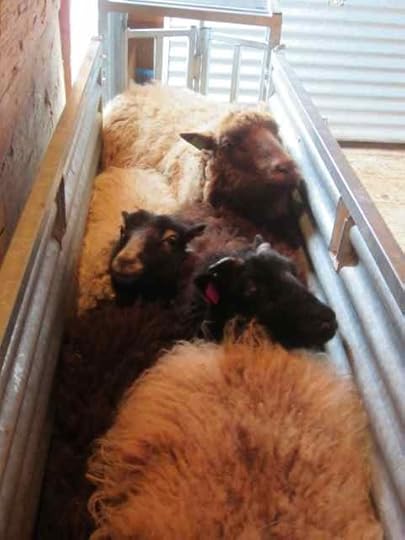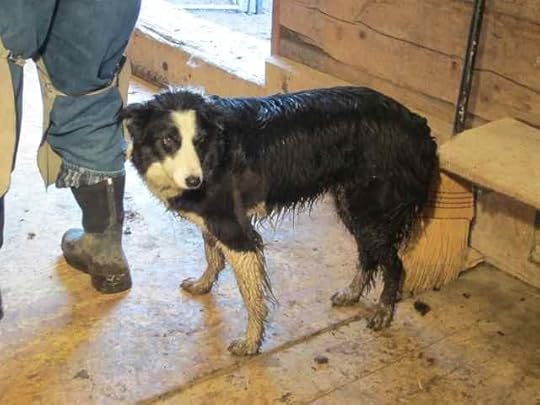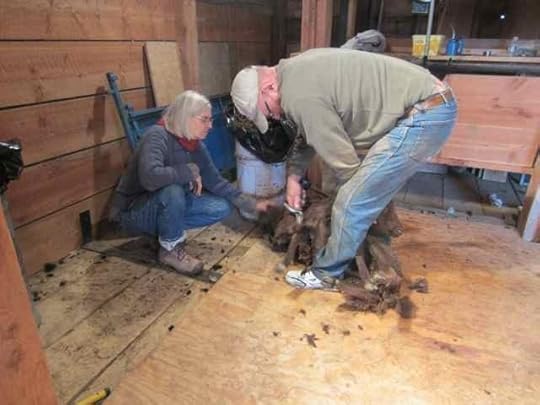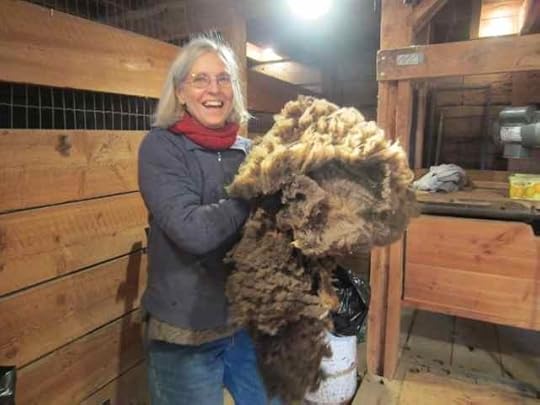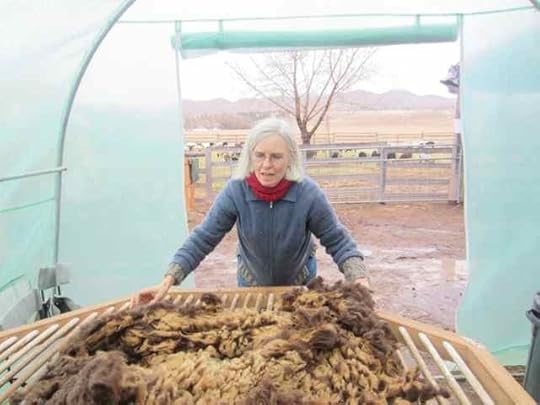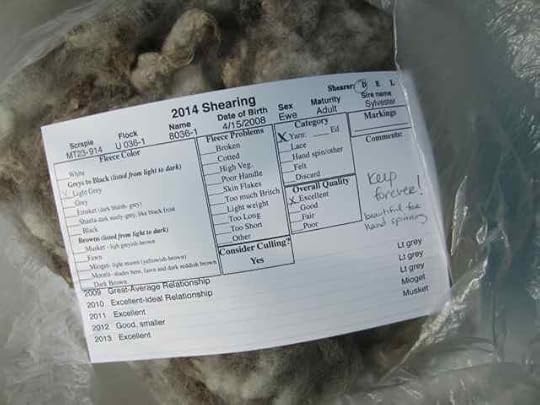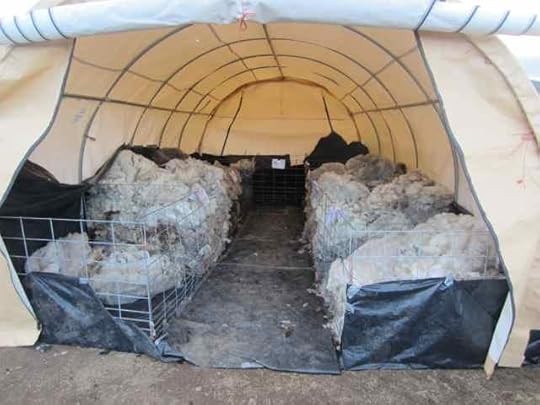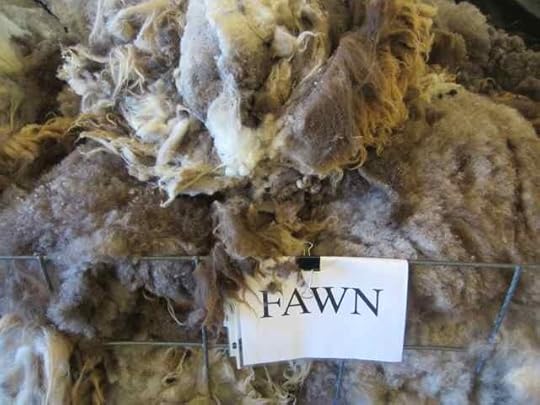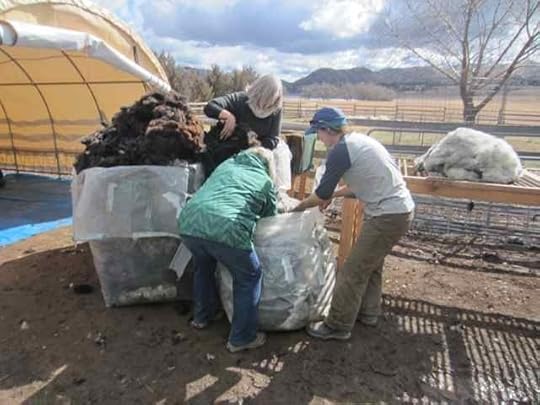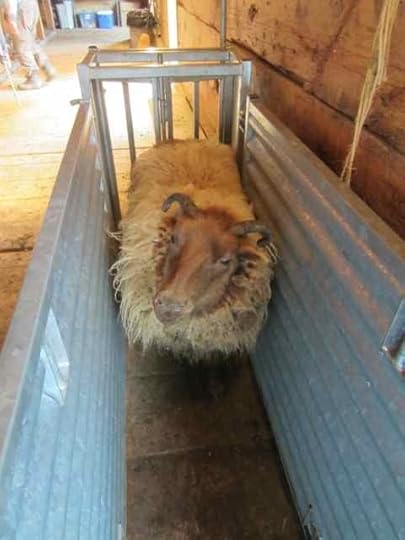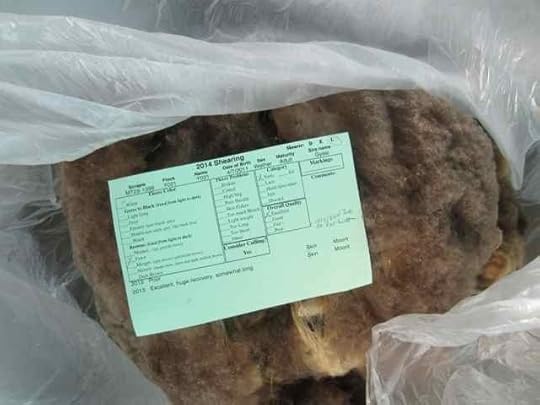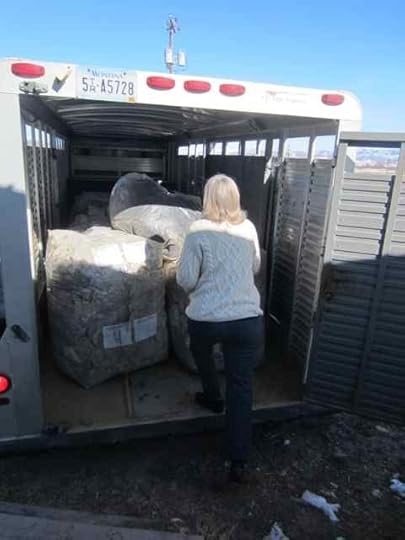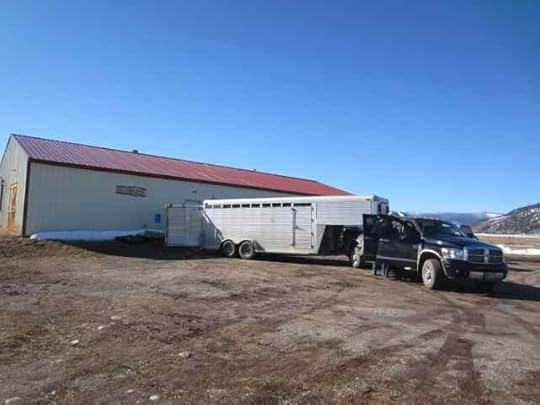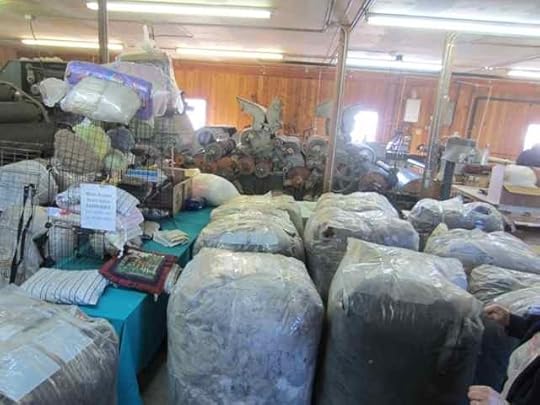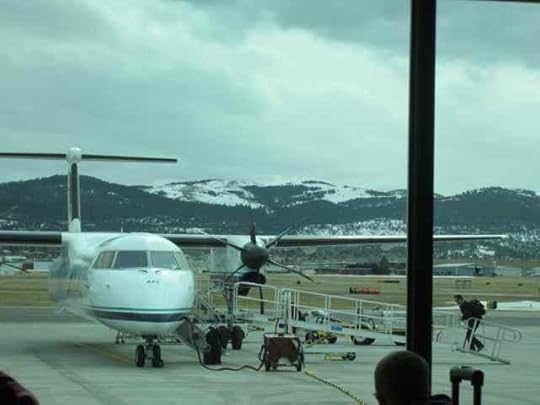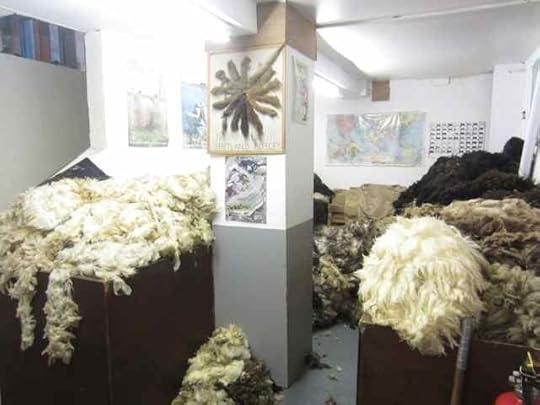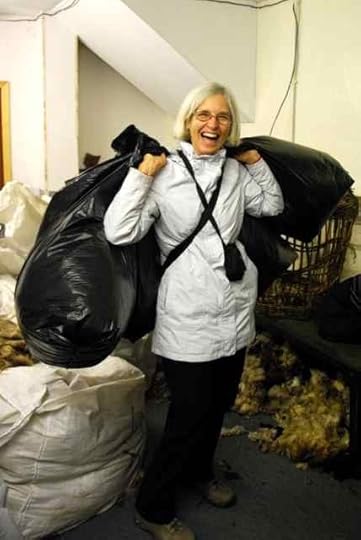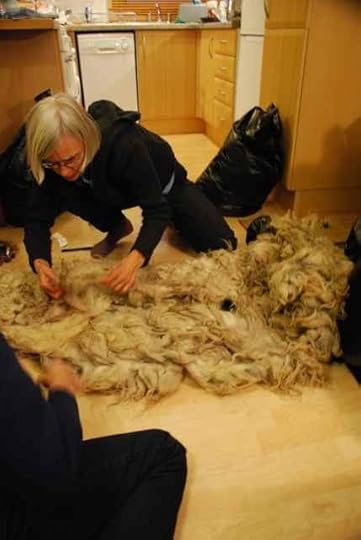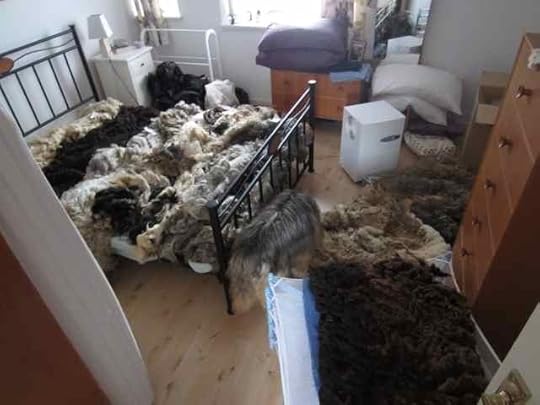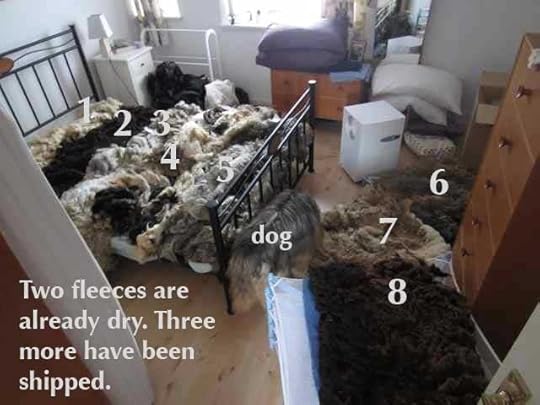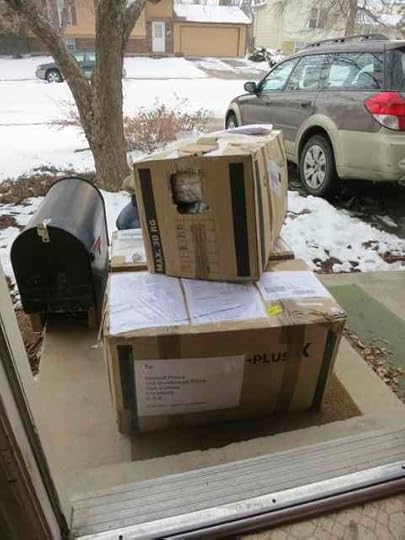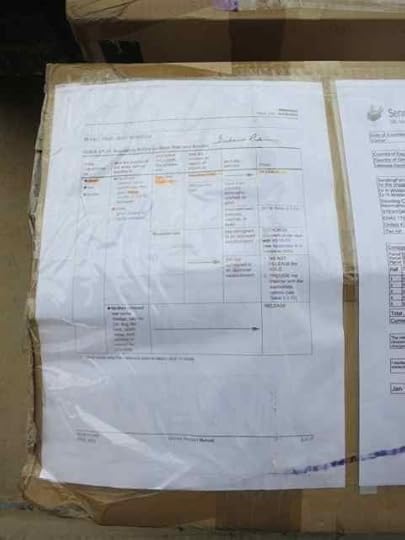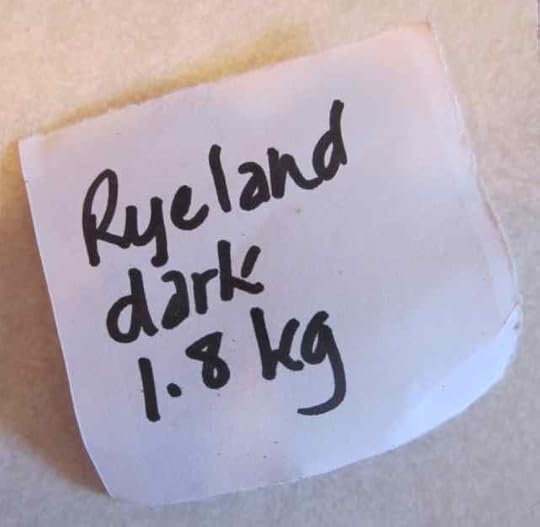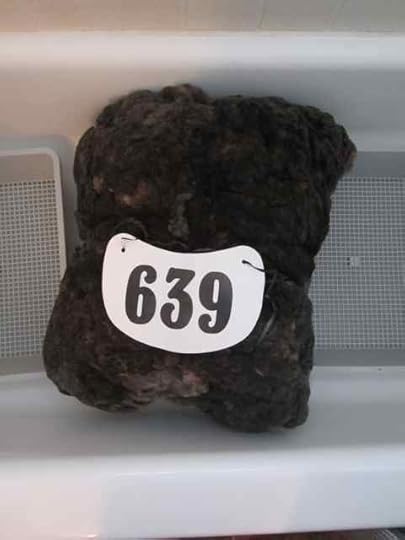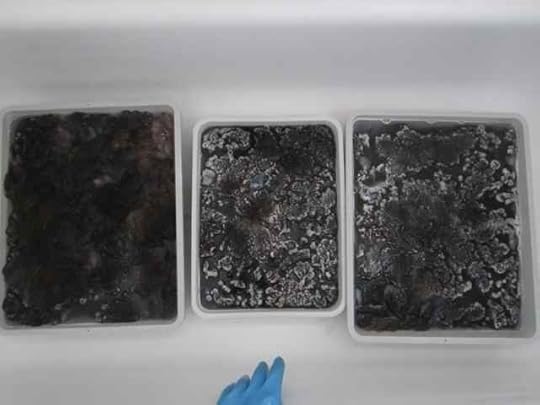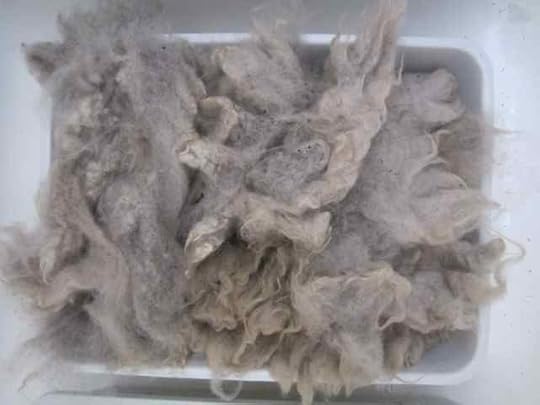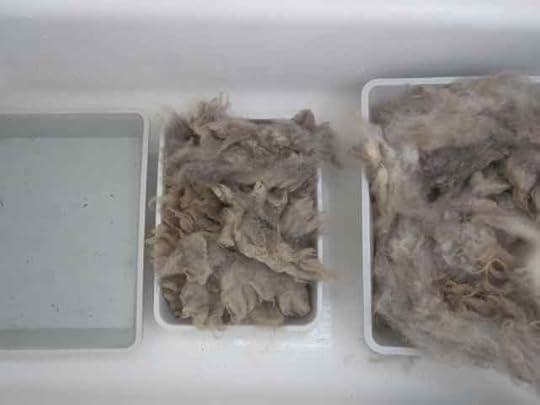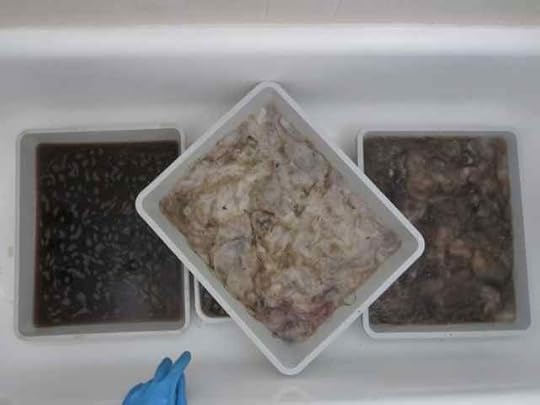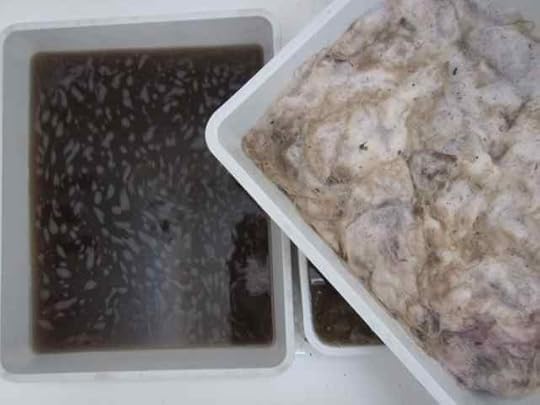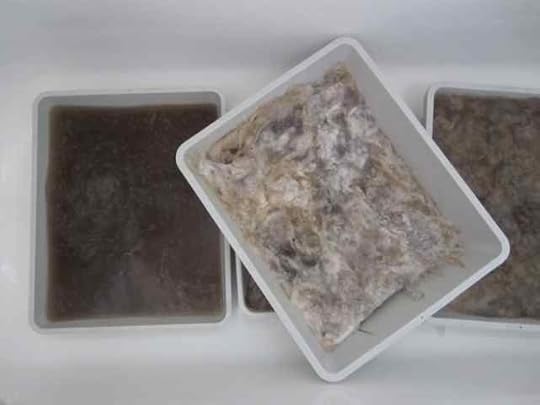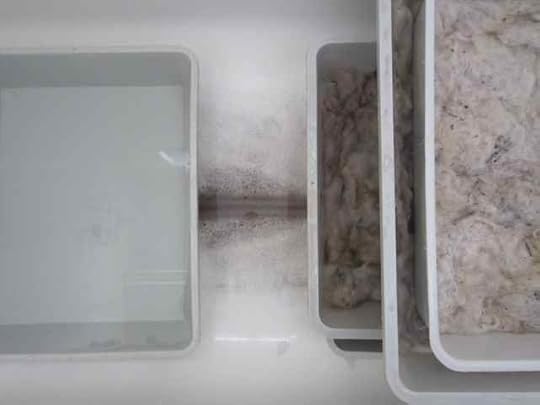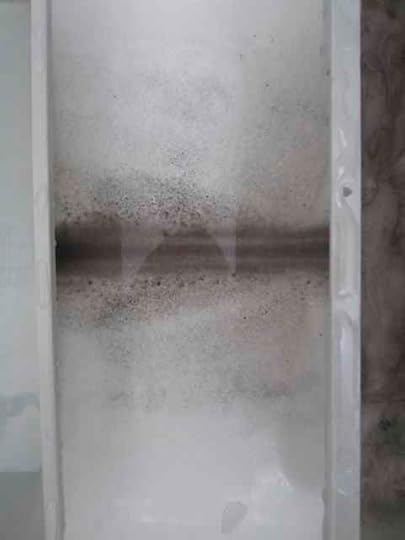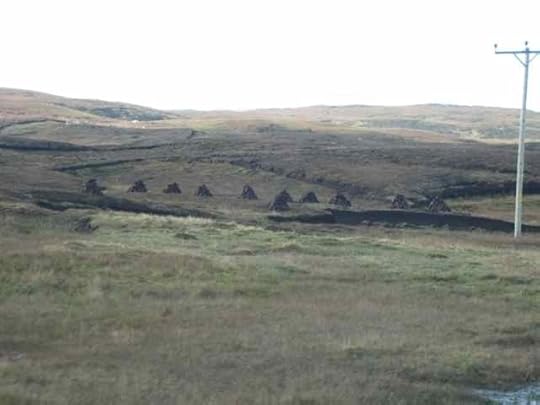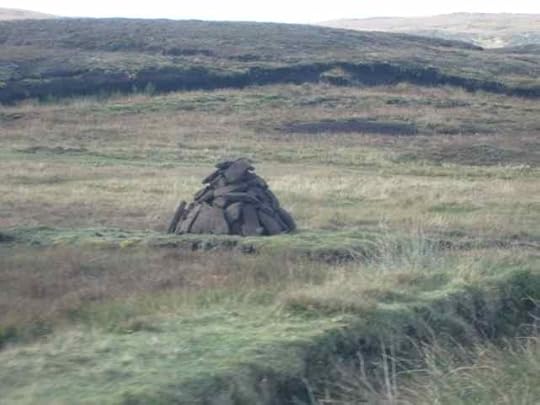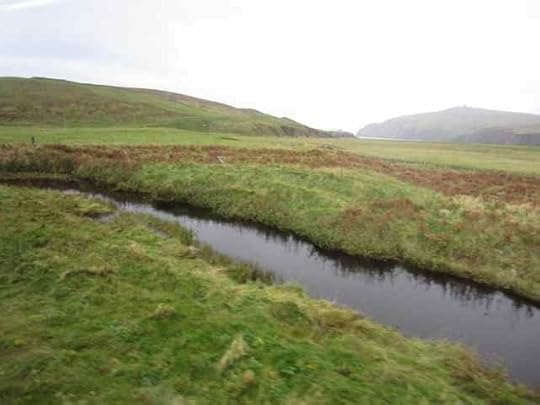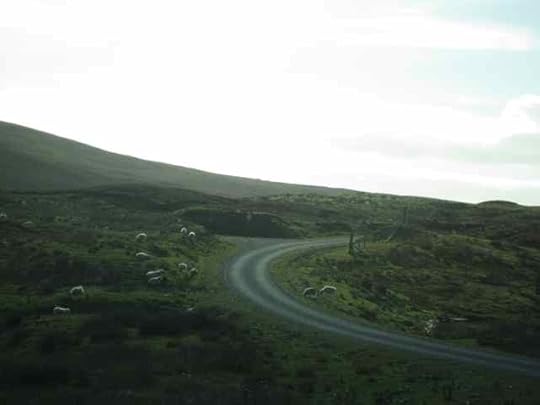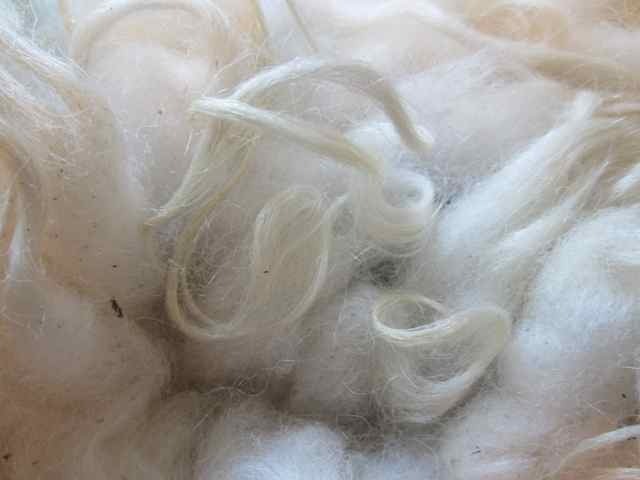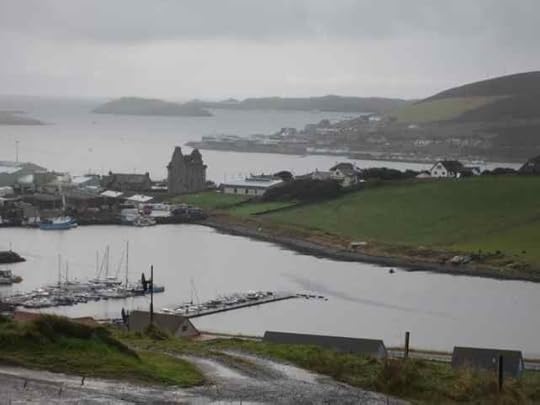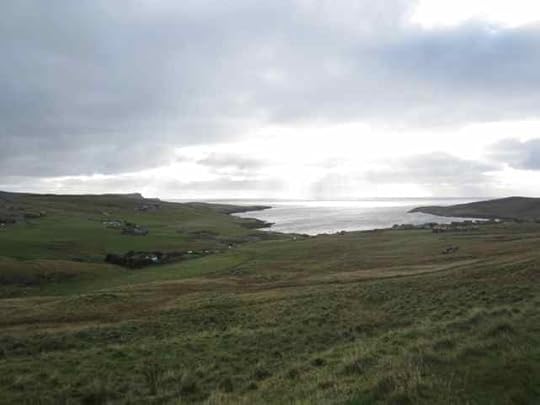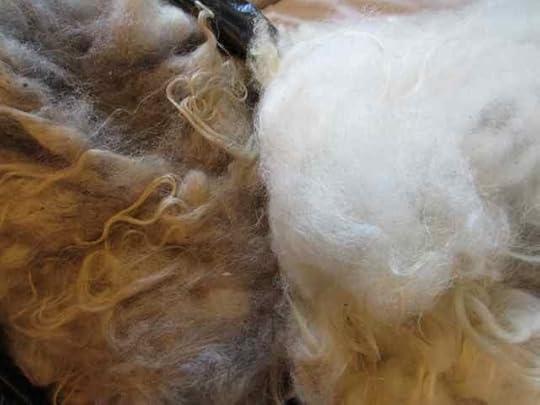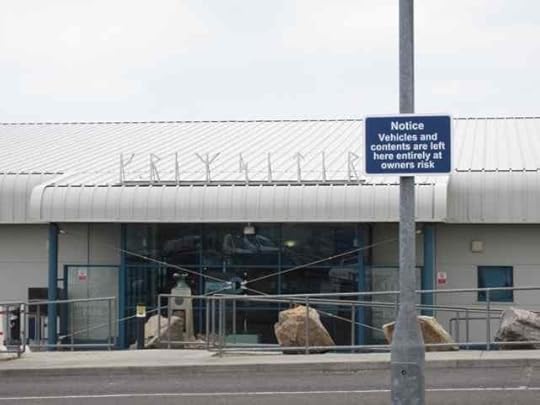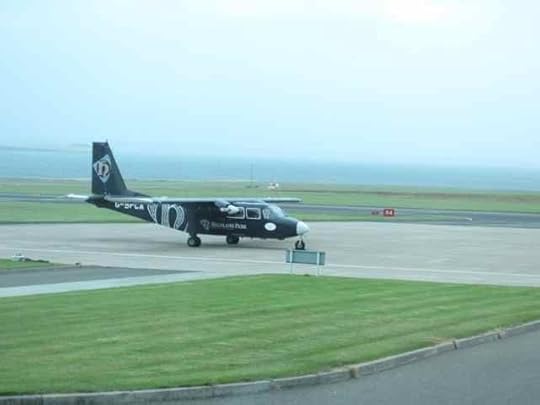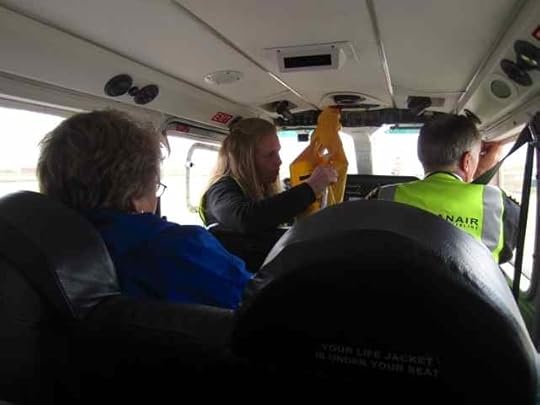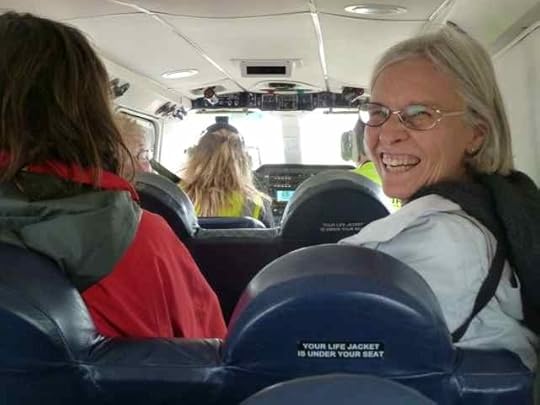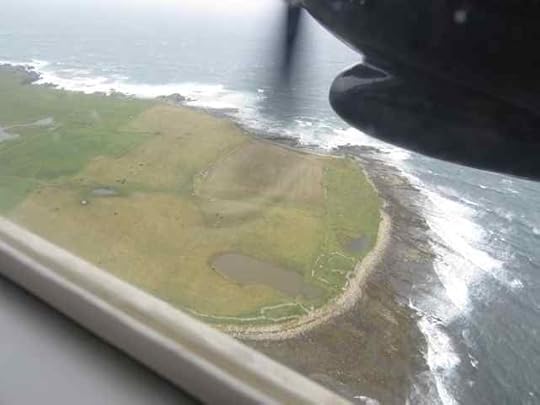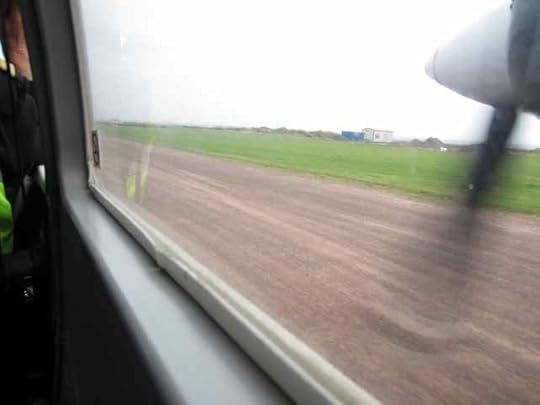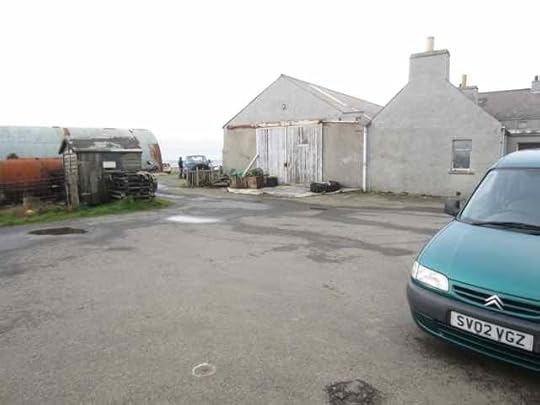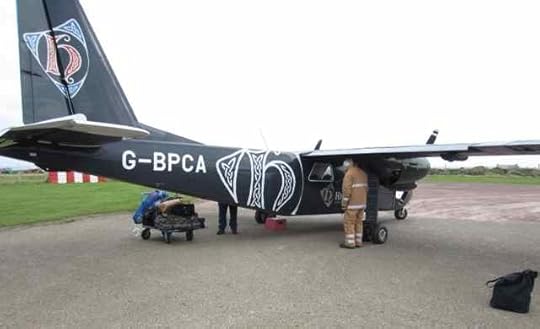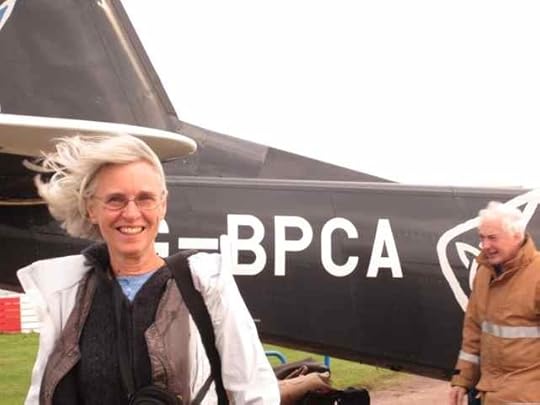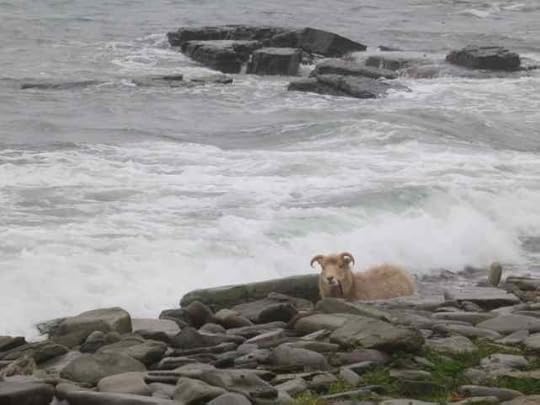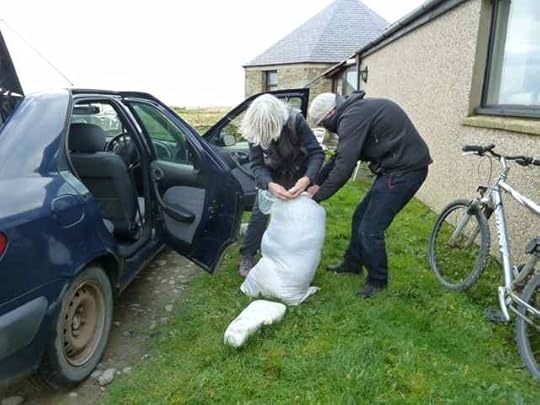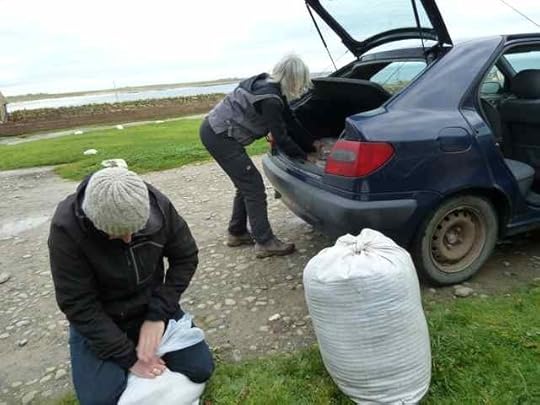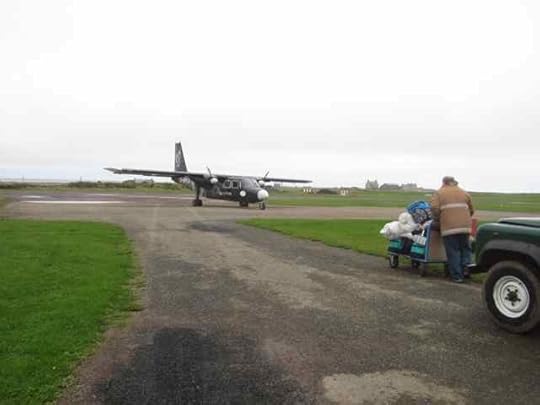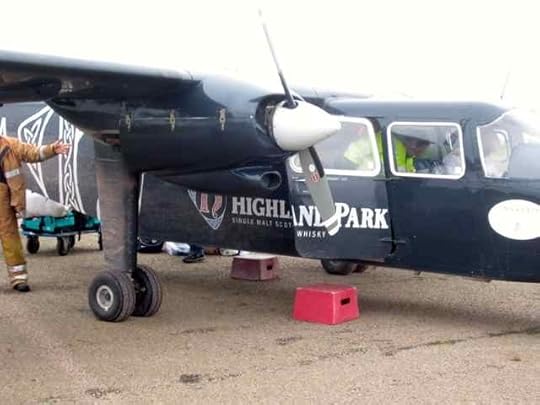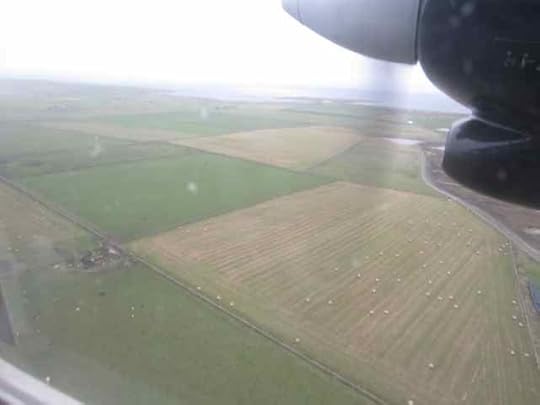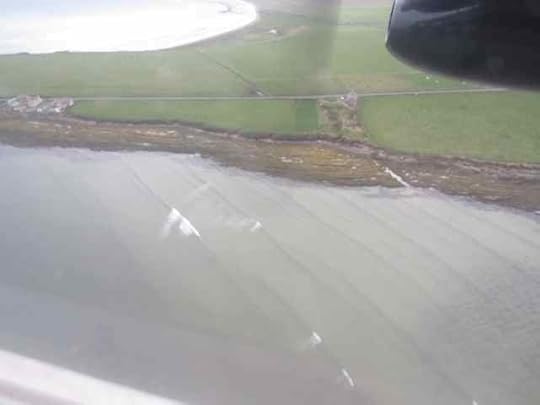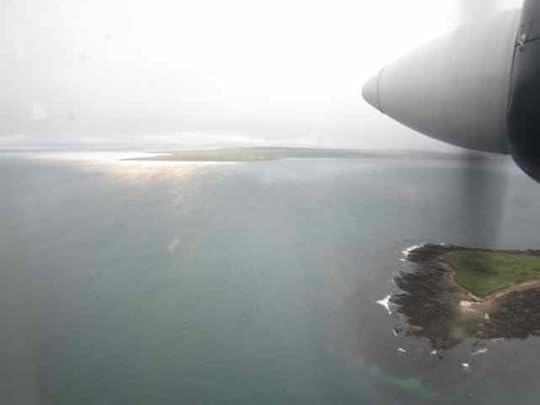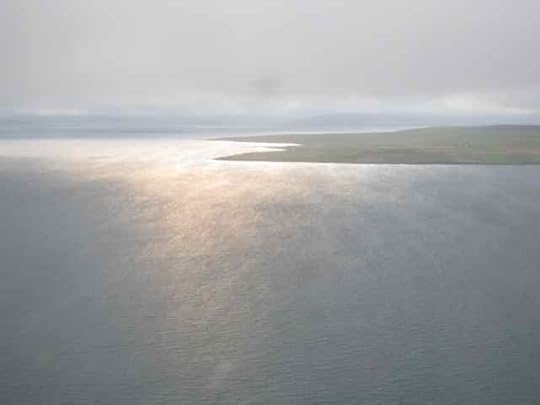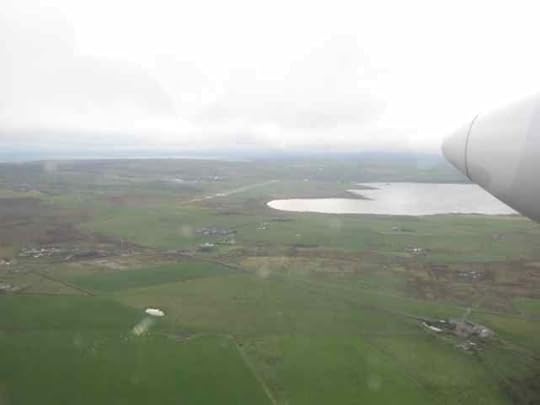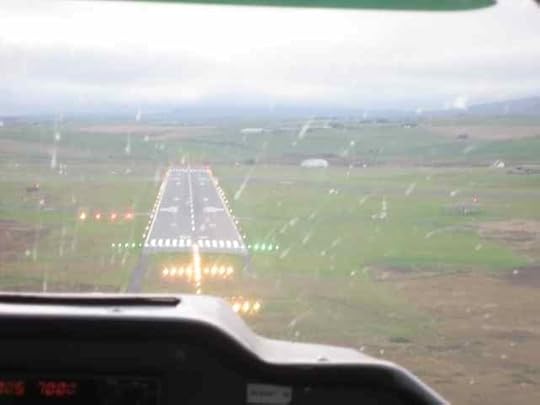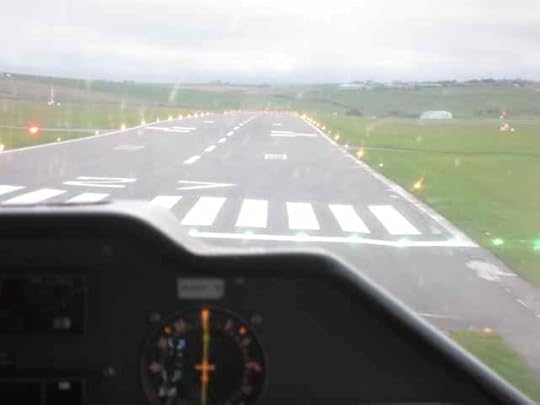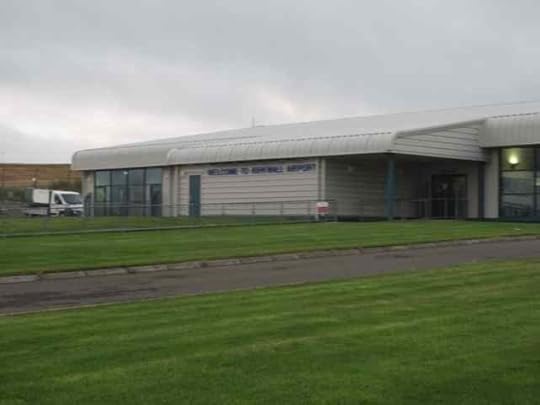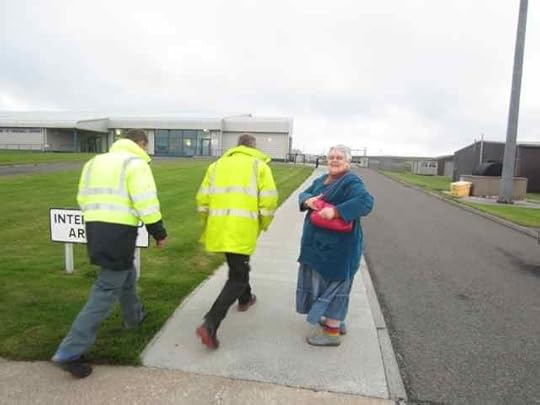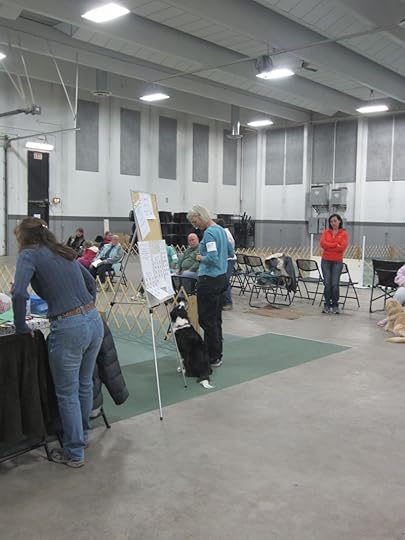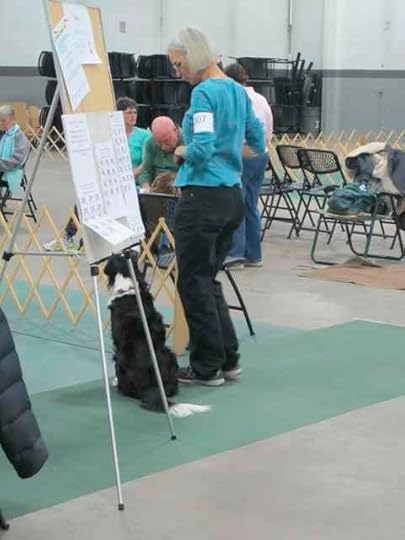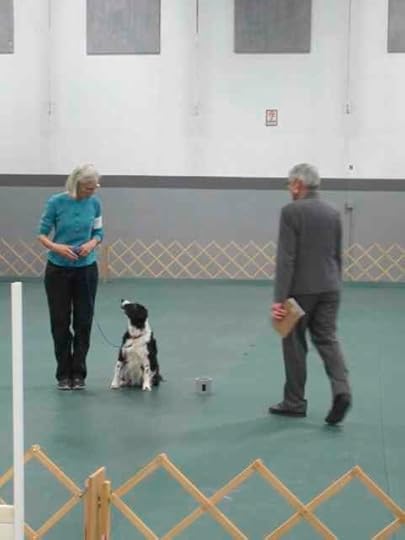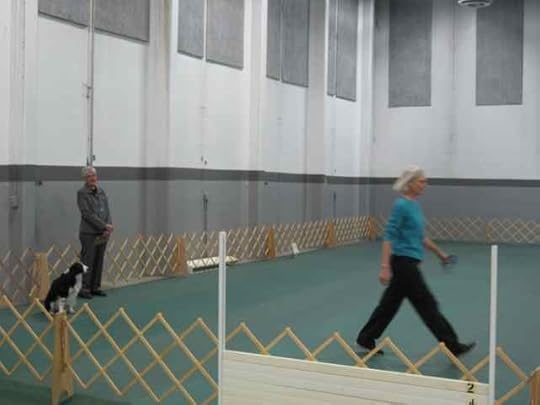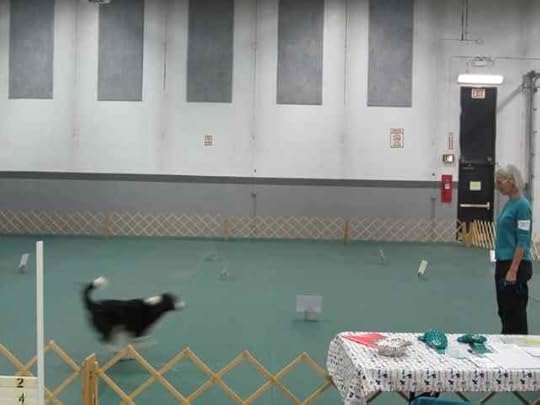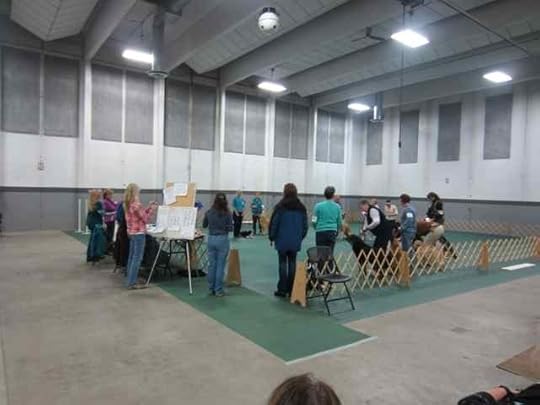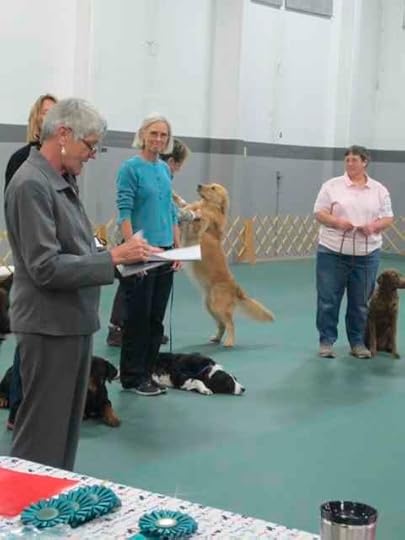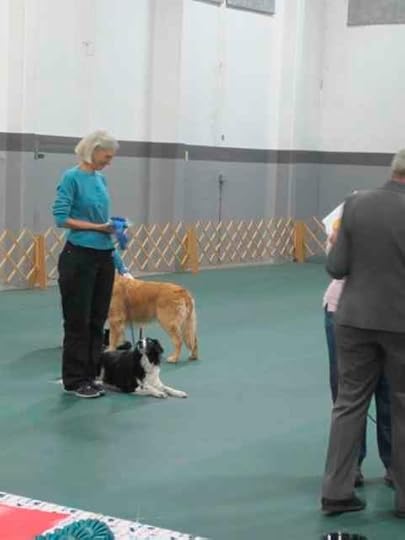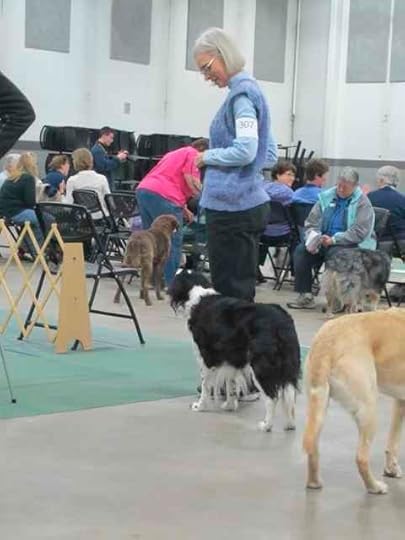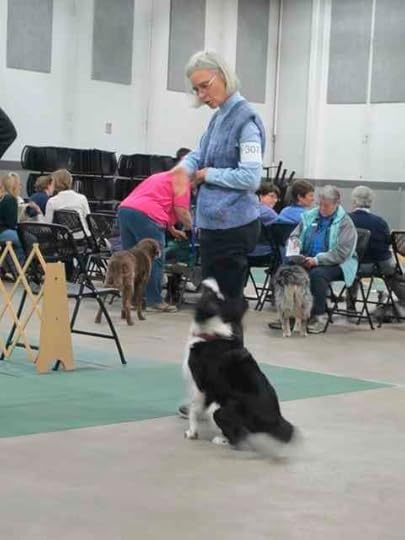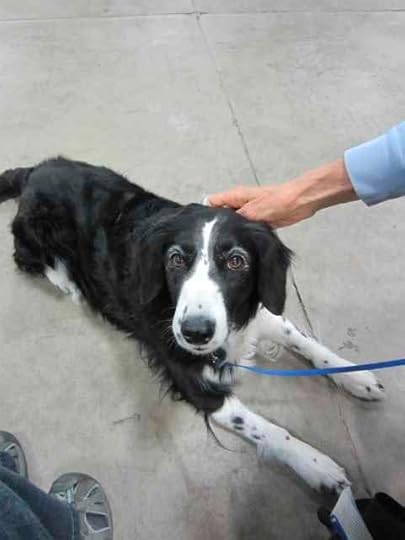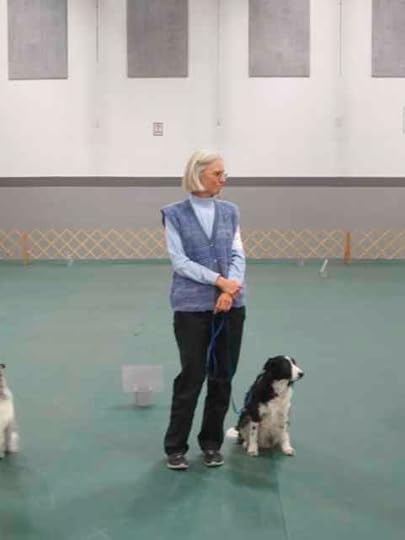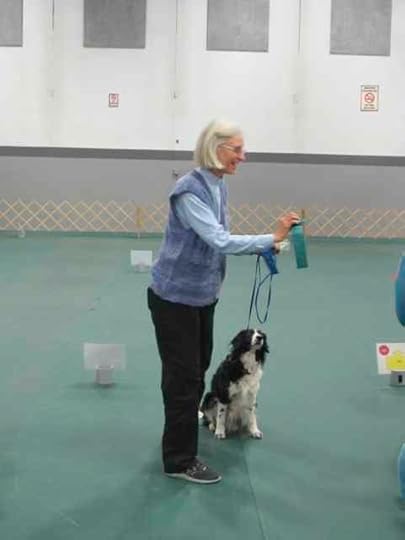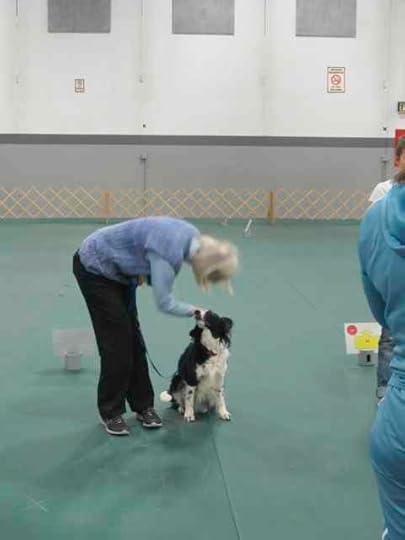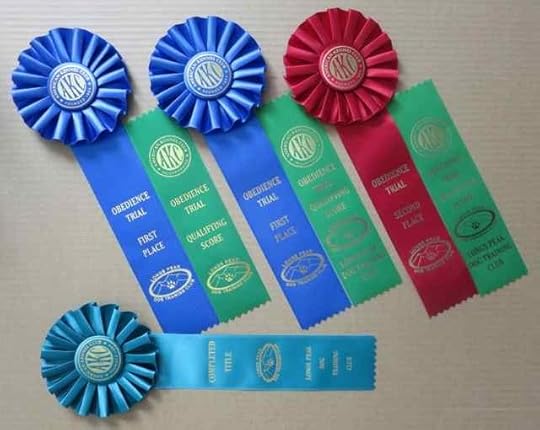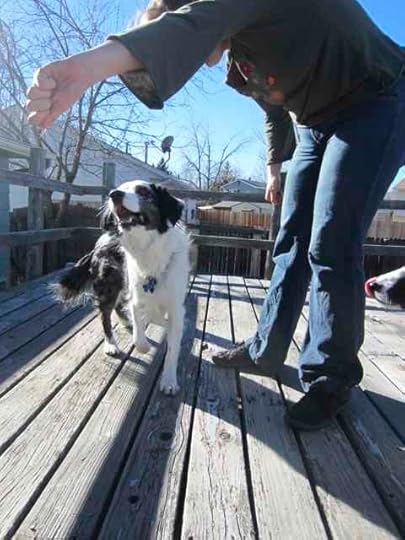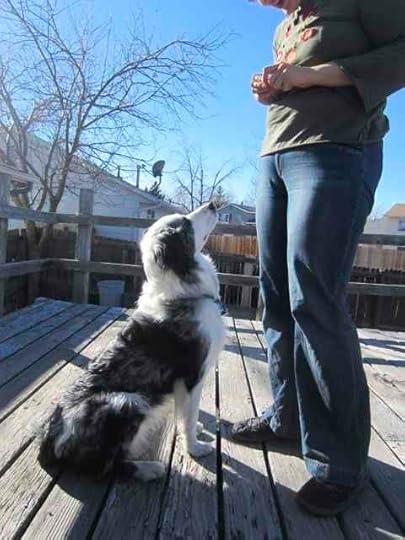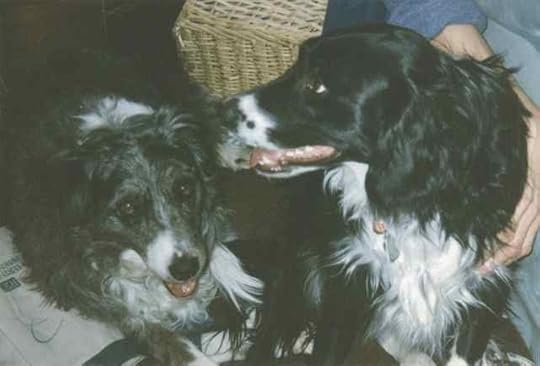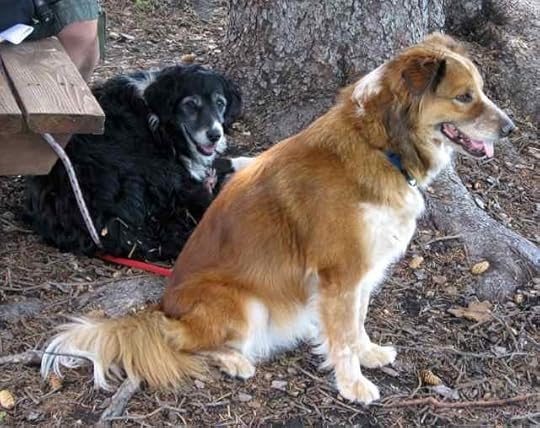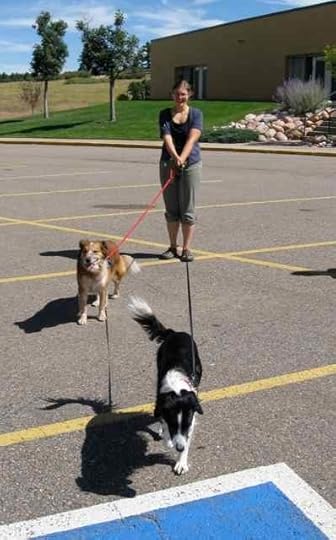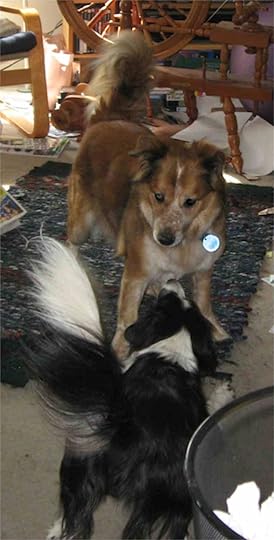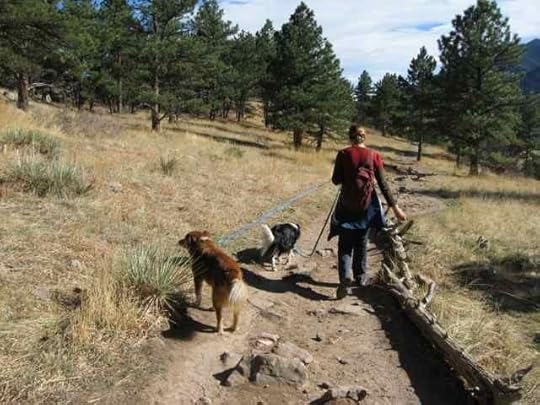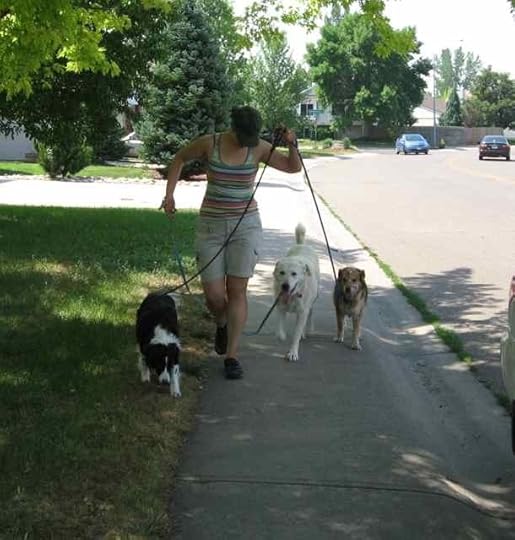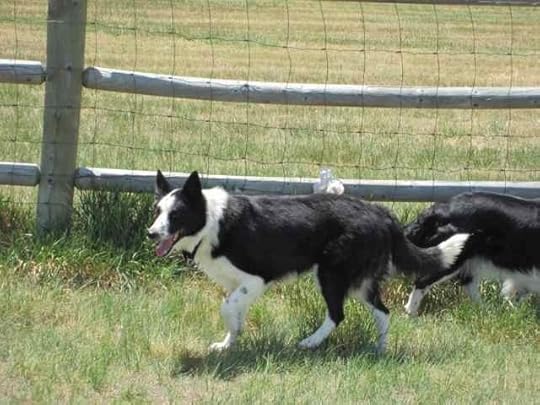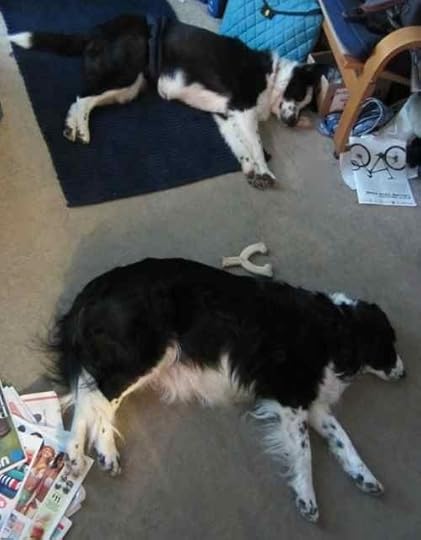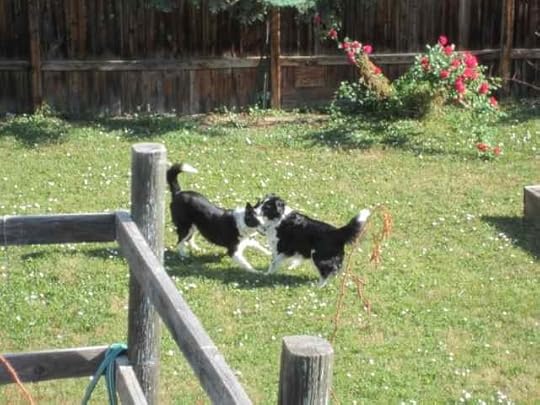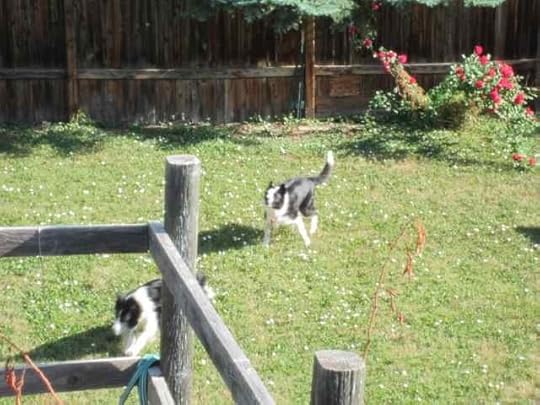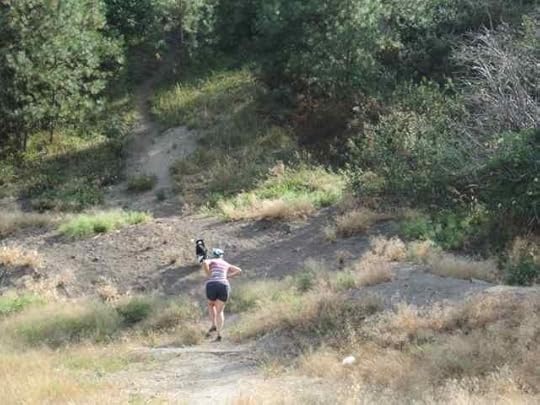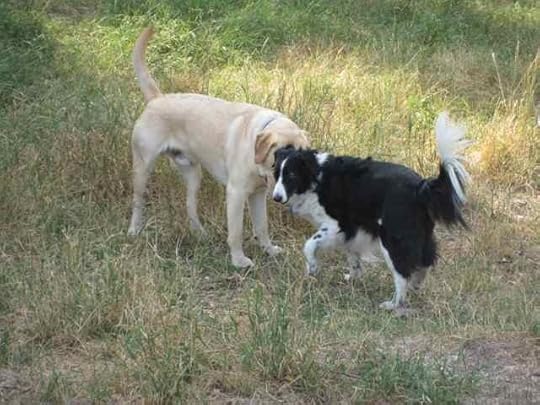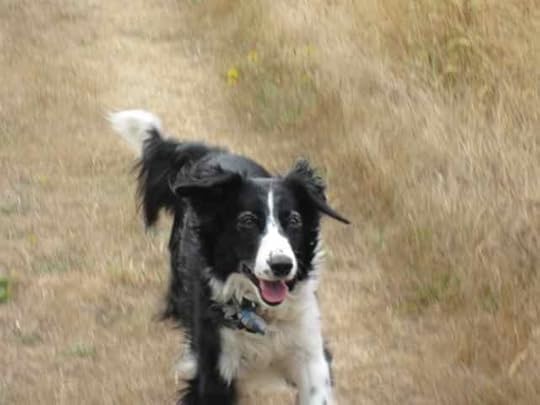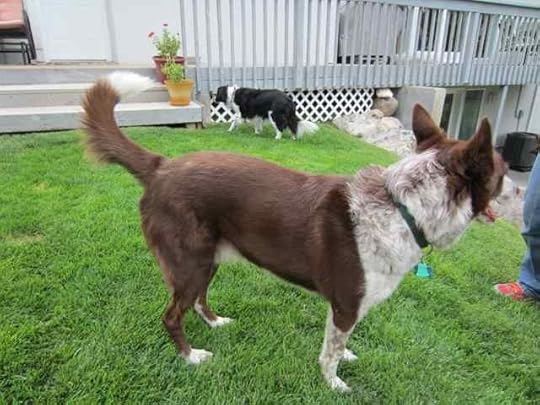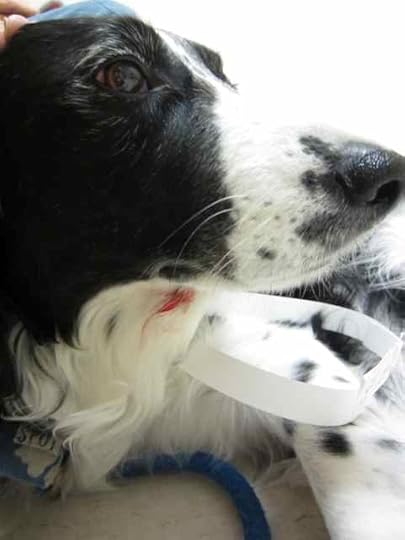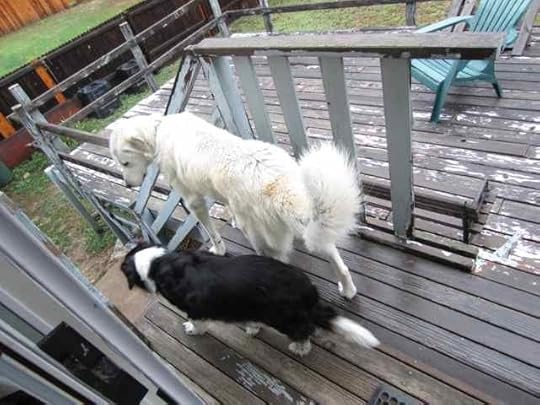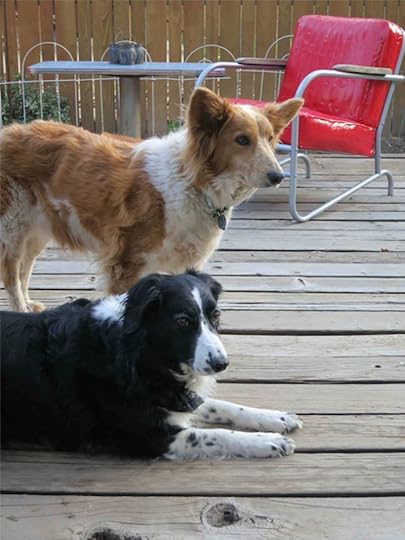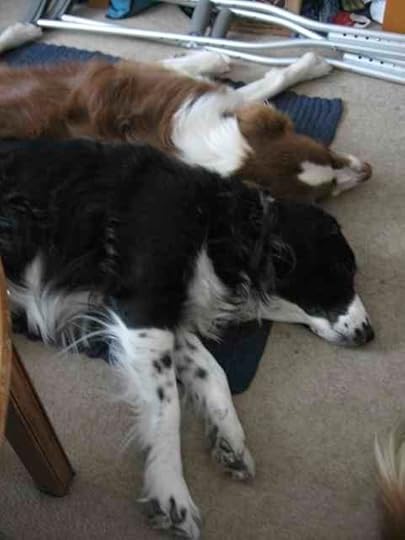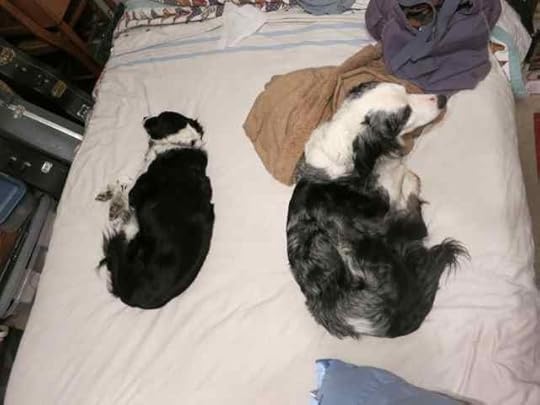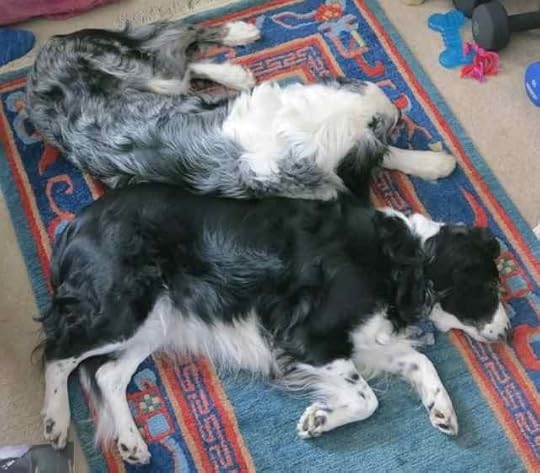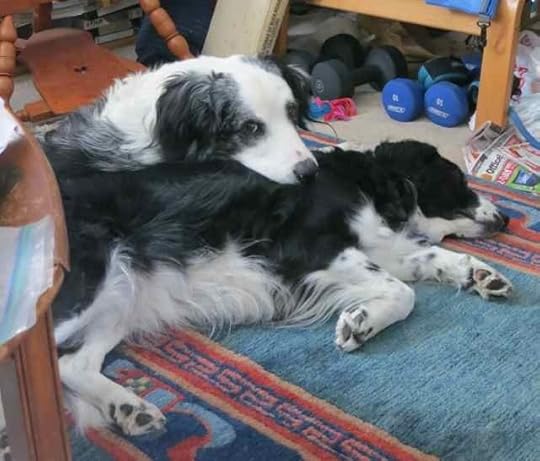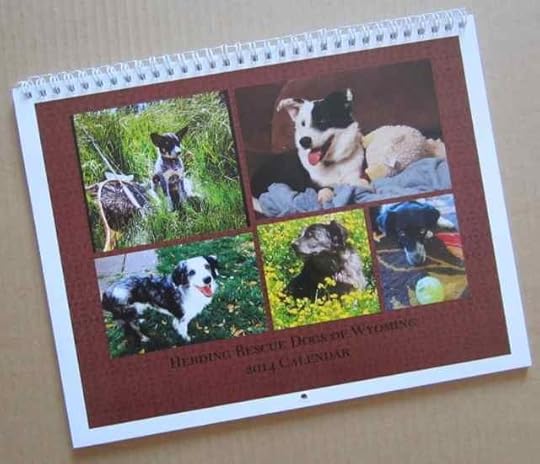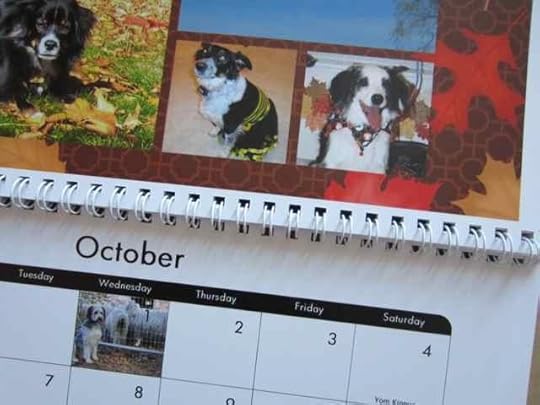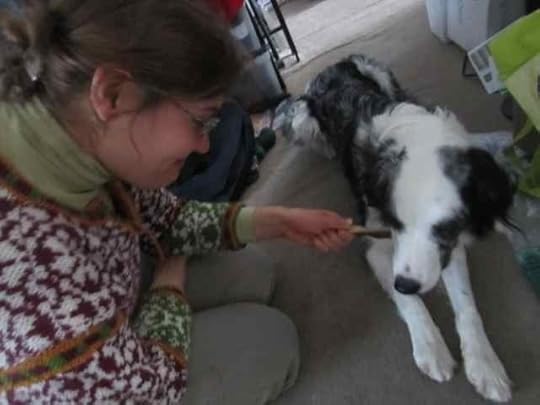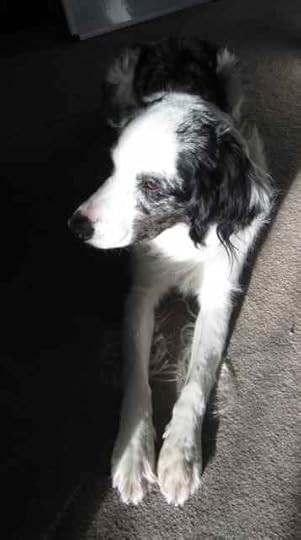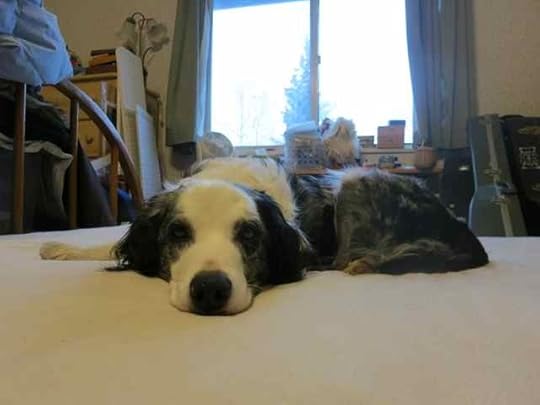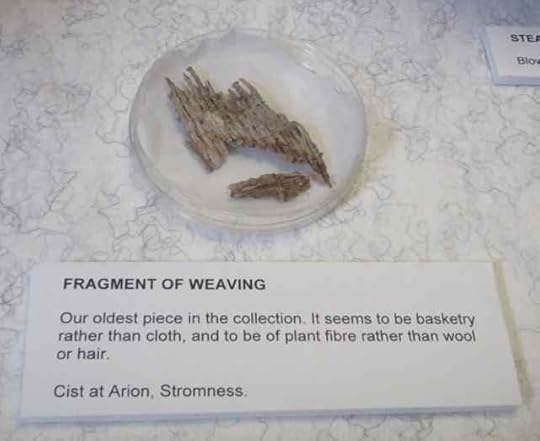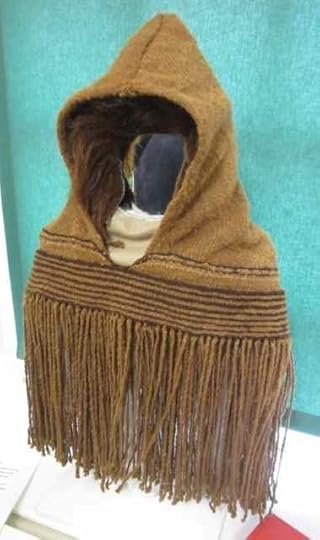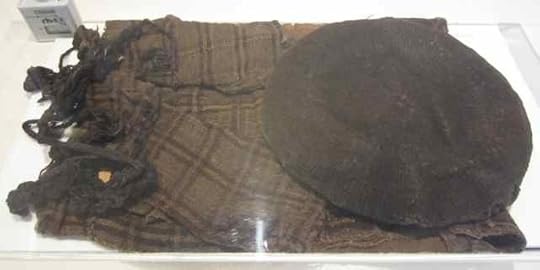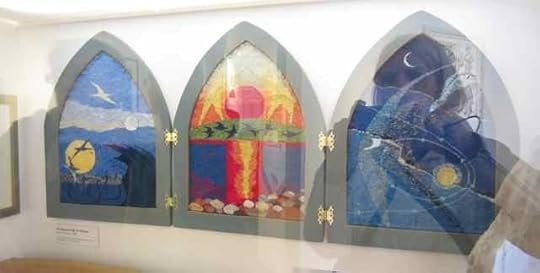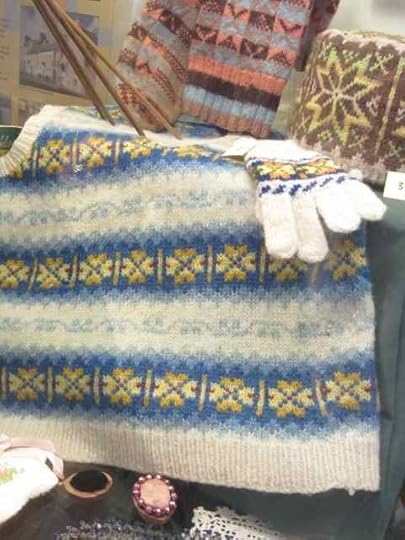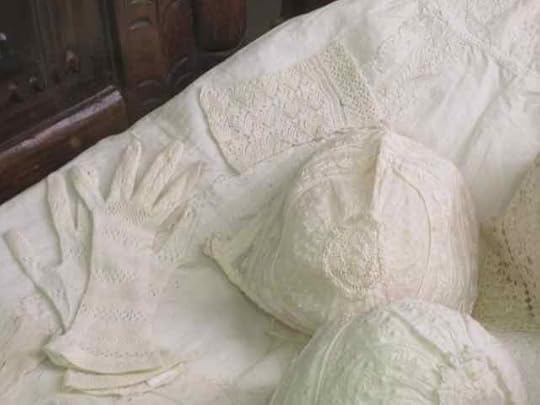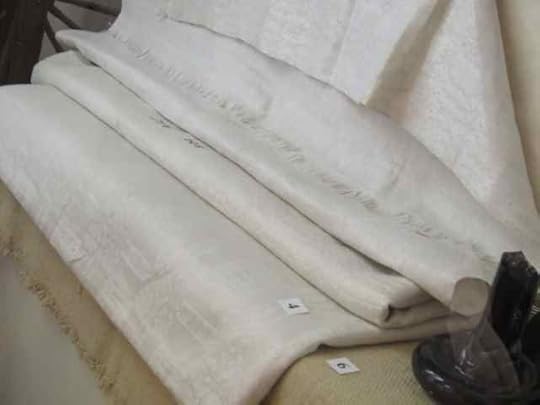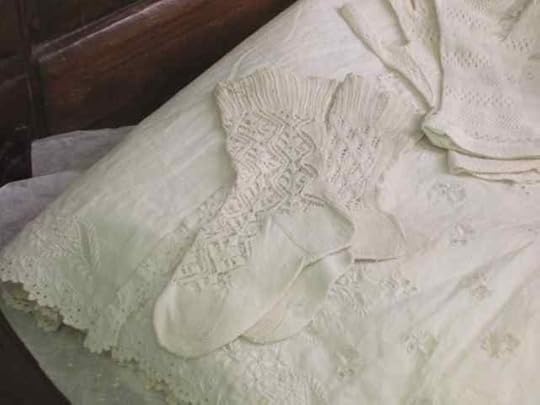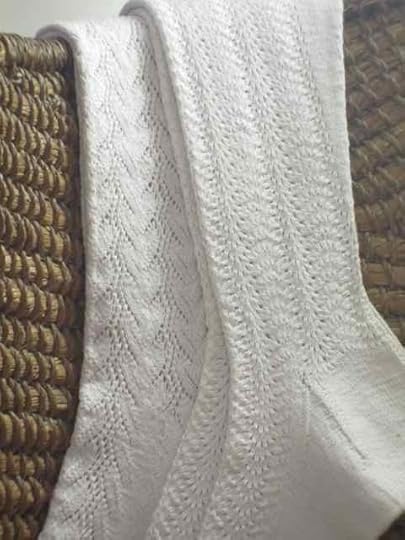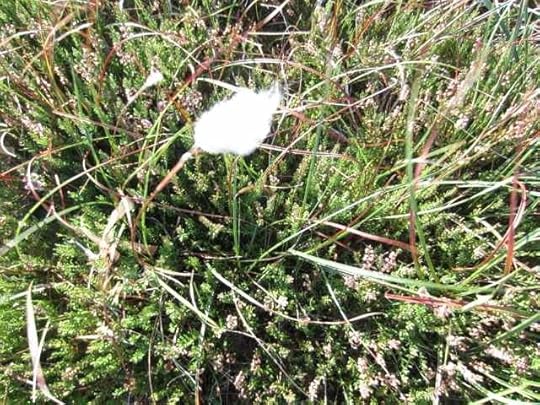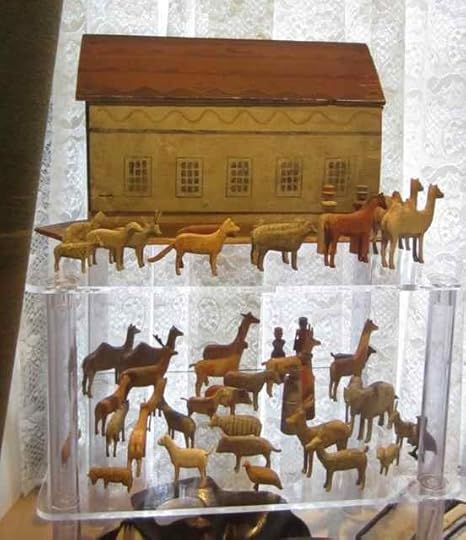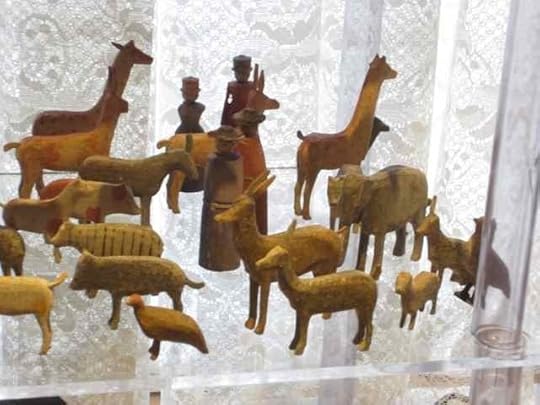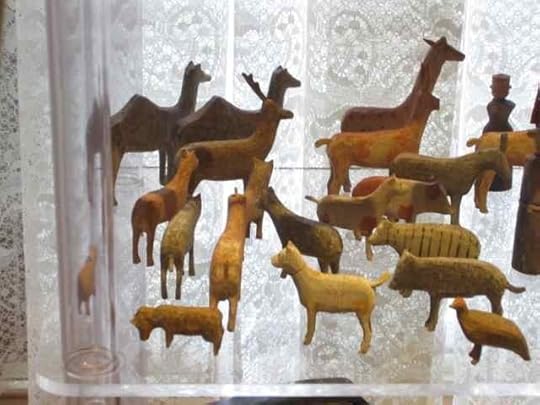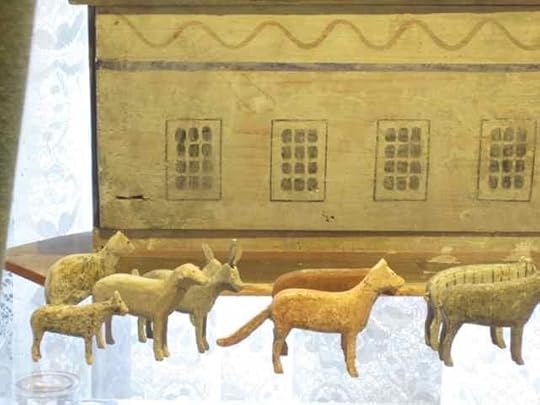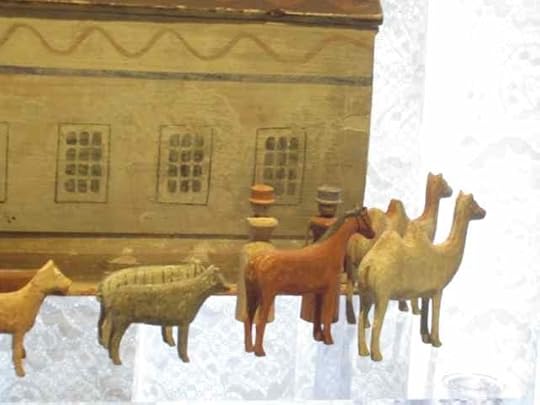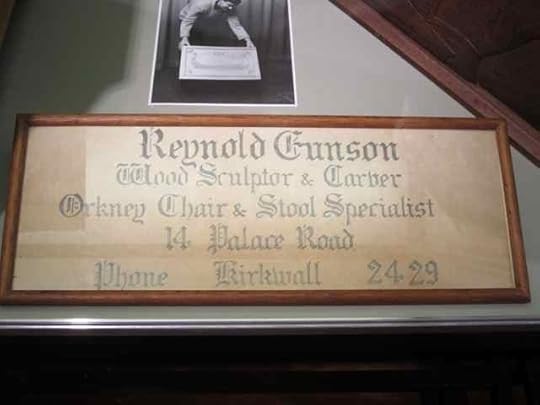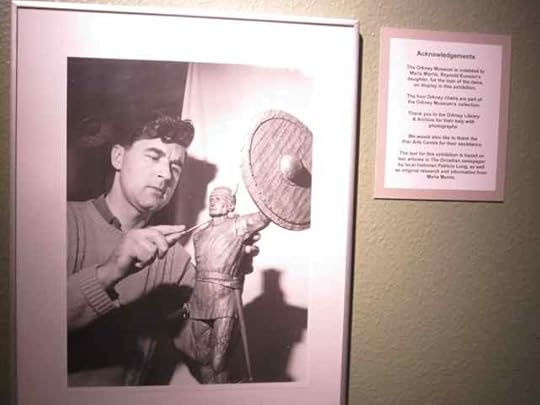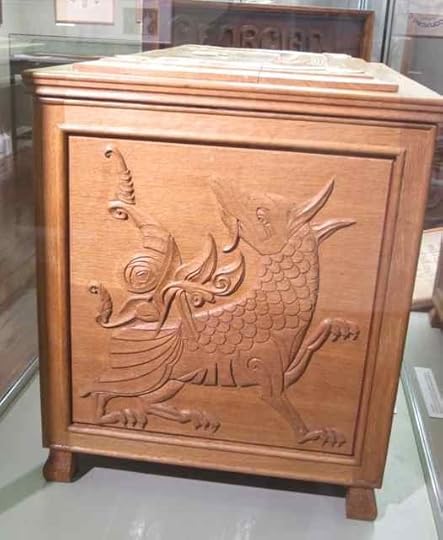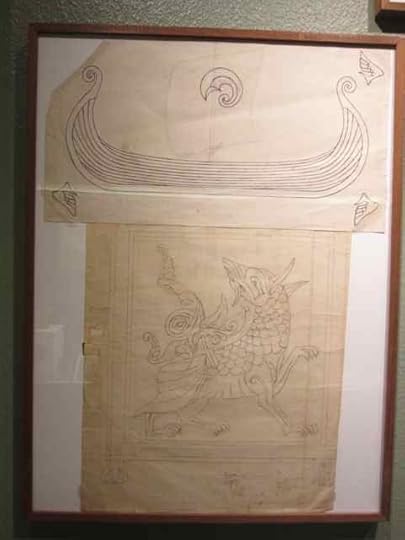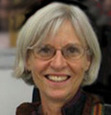Deborah Robson's Blog, page 4
August 3, 2014
Fibre-East 2014 and some visiting of sheep
Okay, I’ve had to change computers and software and my entire working process. I think I’ve got the necessary tools in place now—just in time to catch up with some of the trip that is current. I’ll get back to the previous sequence later.
There will be more photos than text (I hope) in order to have a chance of staying current, more or less. Apologies in advance for possible fuzziness in the photos. I think I need to tweak some export settings on the software, but first I need to figure out where and how to do that.
So: Here are some images from the lead-up to Fibre-East and the event. I don’t have many. I was sorting wools and teaching, not taking photos.
While we were getting over jet lag (or, rather, almost as soon as our feet touched the ground) we went off with Michael Churchouse to see sheep. Michael does the Sheer Sheep Experience and presents terrific and entertaining educational programs on sheep and wool. But we got the private tour of part of his flock. It’s eclectic.
Sarah Anderson and I piled into Michael’s truck, along with Lady, Dell, and Kep. Lady (Michael on the phone). . . .
All three, featuring Dell. . . .
Kep. . . .
Front passenger seat (wool compresses):
Sarah was in back. There was far less wool and much more dog.
A few of Michael’s sheep, begging for biscuits. . . .
Abby Franquemont (also teaching at Fibre-East) and Janet Ellison (organizer of Fibre-East) were scheduled to meet us, but, to the dogs’ delight, were delayed. Sarah and I scrounged for sticks. Kep chased sticks, Lady chased Kep, and Dell rested under the trailer in the shade.
After Abby arrived, we got to visit all the sheep again. Hebridean, Manx Loaghtan, Portland, Lonk, Shetland, Wensleydale, Saxon Merino, Whitefaced Woodland, Herdwick, mules, Lincoln. . . .
This is Sarah Anderson, Abby Franquemont, and me, in close proximity to a lot of wool and sheep.
Michael is growing for wool, and presents his traveling show on British wools at many events, including Fibre-East.
This is his stage.
This is backstage (the “green room”).
He does an inspiring job.
And there are no photos of my workshops at Fibre-East because time flew past. All wools were sourced and washed locally (many from Michael’s flock). I never even set foot in the market (and I really needed a bit of yarn for some “brainless” travel knitting).
And despite that lack (there was terrific wool there in the market, and I didn’t even have an opportunity to look at it), I had a great time.
We had about 26 breeds’ wool in the workshops. I’d normally cover about 18 to 20 in the same number of workshop hours (a two-day wool types workshop and a one-day rare wools workshop). We were trucking!
And then I went north to Yorkshire for more woolly experiences.
June 23, 2014
The reason(s) I have not written a post in a very long time
There will be no photos in this brief post for a reason that will become clear near its end (at item #4). There will be some screenshots. I have screenshots.
Note: I have a lot of backups. It's good that I have a lot of backups.
When something is wrong with a computer communications system, it can be difficult to diagnose and fix the problem. When something is wrong with each element in the chain of services, hardware, and software that makes up a computer communications system, it can become nearly impossible to diagnose and fix the problem(s).
What has been wrong between me and getting anything done on the computer (and I haven't figured out how to do a blog post without a computer):
1. Connection to the external world (i.e., provider of the communications channel). This was so-called high-speed DSL (insufficient speed, ultimately, to play a short YouTube video, for example, even with patience for significant loading time . . . e.g., fix and drink a cup of tea, still not there). We now, somewhat reluctantly but with greatly improved performance, have a cable connection.
That was somewhat difficult to track down because there were also problems with
2. The local wireless (and wired) network. I have lost track of how many routers and other hardware we went through to get this figured out, and how many knowledgeable people helped us. It was especially difficult to determine what was going on because of malfunctions in #1 above. We now have two pieces of hardware that effectively connect us to the outside service. Although we also have ethernet cables strung all over the house (and we do use them, although they were more critical while we were working on #1).
3. In addition, my primary computer has had hardware problems. This computer (and I am currently using it, although in an incompletely restored way) was bought at the top of the laptop line 18 months ago, in order to make it possible for me to do all the work I need to do wherever I am. It has not been able to do that, and the "not able to" has gotten increasingly obvious.
I've had it in for diagnostics multiple times since February (when I finally was in a location with an Apple store for long enough to do something about the problem, or try; when I'm at home, the nearest Apple store is a 2.5- to 3-hour round trip). Since February, it has on many occasions passed all the local-to-store diagnostics, both the "go out and have lunch and come back in a couple of hours" type and the "we'll need to keep it overnight for deeper testing" type.
Thus "not hardware, therefore software." We have reformatted the hard drive and reinstalled the documents and some of the software first with the migration assistant, then with the assistant but without preferences and settings, and then, repeatedly, manually, one item at a time, in order to rule out bringing in any legacy problems (with a hard-drive reformatting between each attempt and the next). I have not had all the software I need back on the computer in several months because we keep having to reformat and start over. Plus I want to keep the system as simple as possible until we know what's going on. (Although at this point, I'm not sure that will ever happen.)
As it turned out, when the machine (having passed all routine tests but still behaving erratically) was sent off to the repair depot in, I think, Nashville, it had a defective logic board and defective cables connecting the hard drive to the logic board. Those were replaced. (This also involved replacing the graphics card, which is attached to the logic board.)
It still had problems.
It now also has a new hard drive ( . . . start over with that re-installation of everything . . . ) and is better.
But is it fixed?
Not sure yet. There are still a few problems. I'm still watching the processor take a long time to do many normal tasks. And. . . .
4. iPhoto has apparently corrupted something relating to the photo library. It has lost keywords and other identifying information (e.g., image numbers) from some of the photos and is providing garbled event names in some instances. This is a problem for my research, and for my writing of blog posts.
Here's where I can put an image in this post.
Those events with strings of letters or numbers did not have those names a short while ago. They had either dates in readable formats or topic names (like "Soay wool").
The socks in the events above (Brenda Dayne's Tintern Abbey pattern, adapted for a different weight of yarn) used to have the keyword "Wensleydale" attached. They still come up on a keyword search for "Wensleydale" BUT the keyword is not visible in the information file for the photo. The keyword appears to be there and usable, just transparent.
On the other hand, those four lovely sheep below and to the right are Finns. They used to have the keyword "Finn" attached. They no longer do, and they also do not come up in response to a keyword search on "Finn." The keyword appears to no longer be either there or usable.
This is a problem. Apparently scrambling and loss of data like this "sometimes happens" with iPhoto (and also with Aperture, to which I had been thinking about switching).
I do have multiple backups of the iPhoto library, in several forms, but some of them need to be converted to be read by the current version of iPhoto, so they're not (yet) helping us solve or sidestep the problems of lost data.
____
Other erratic behavior is not yet explained.
At almost 100% complete, why is there no indication on the progress bar? (This is iPhoto again. At this point I have fairly low expectations for iPhoto to have rational behavior.)
Is the fact that the icons along the bar at the top are missing a problem of Firefox (probably) or something with the local software or hardware (possibly)?
Is the problem on Facebook with linking to names (blue indicators do not align with the name, or sometimes won't link at all) indicative of a problem with Facebook, the browser, or the computer?
I haven't even tried reinstalling the most resource-intensive software on the machine yet. So even as far as it does work, it doesn't have the tools I need and depend on. And when it comes time to install the Adobe software, it's highly probable that I'll have to spend a significant amount of time on the phone convincing the company that I'm not trying to steal their software and put it on more machines than it's licensed for—because undoubtedly on one occasion or another I forgot to deactivate it before I, or someone else, wiped the hard drive yet again.
___
The good news is that while this 18-month-old MacBook Pro with 8 gigs of RAM and the big hard drive and the optical drive and all the other goodies is not working reliably, the 5.5-year-old iMac downstairs, with 4 gigs of RAM and the somewhat creaky (but not unexpectedly so) disposition, allows me to continue with the basics of my freelance editorial work. However, it doesn't travel. And it doesn't have all my photos on it. And even if I were to load them on, I'd have to reinput all the keywords (assuming I could remember the identification of everything without the clues that I previously spent time keying in). And I don't have time to do that.
If I were sure that a new computer would solve the problems, I'd have already jumped in that direction. But I'm not.
Meanwhile, a friend has suggested that we check for magnetic lines or radio waves running through our property and that maybe I need to be working in a Faraday cage. If invisible waves were the cause of the difficulties, I'd think the other Macs and the PCs would be affected.
___
I'll be back when I can be back.
___
Addendum:
So I go to the coffeeshop to get some work done in a quieter, less fraught location.
Reminder to self: People did get work done with quills, inkwells, and the Pony Express. Unfortunately, those means of communication might work for me, but they would not work for most of the people I need to communicate with. Plus I think the ponies have all retired.
April 14, 2014
Felicity Ford's super-cool upcoming book
Okay, so there’s a Kickstarter campaign to fund Felicity Ford’s book on designing colorwork from images in everyday life. You’ll want to go look at the presentation over on the Kickstarter site, and don’t you love the fact that it got fully funded very, very quickly? With Kickstarter, only fully funded projects get any backing at all. Whew. The book will definitely be produced. That’s good news for all of us, because this project is inventive and charming and intelligent, as is Felicity herself. I met her during Shetland Wool Week last fall. I signed up for the campaign to be sure I got a copy of the book as soon as it was available.
Lots of Felicity’s work involves elements of vernacular life: sounds, colors, textures. I’ve borrowed the word vernacular for use here; it’s normally applied with reference to languages or architecture (living spaces). One of my all-time favorite books is Bernard Rudofsky’s Streets for People, which I read not long after it was published in 1969 (then I went and discovered his earlier Architecture without Architects). From my perspective, the type of awareness that characterized Rudofsky’s work also imbues Felicity Ford’s. In addition, I appreciate the extent to which she is well aware of the way women’s contributions to culture have been overlooked because they are most often part of the everyday texture of history, not its cataclysms.
Thinking of Felicity’s work brings out some of my pleasure in language and big-picture theories at the same time that she is absolutely grounded in the simple delights of life. I treasure that uncommon balance between the academic (for lack of a better word) and the practical.
I’ve asked Felicity to talk a bit here about what she does and why, because I think you will enjoy hearing from her. Check out the Kickstarter campaign—be sure to watch the video!—and then come back here for some background. You’ll see immediately, I think, why the way her mind encounters the world deserves all the support and nurturing the fiber community can offer, and why I’m thrilled that her book already has the green light.
Like me, Felicity is avid to see connections and loves details and thus writes at some length. Make a cup of tea and enjoy a journey through parts of her world.
____
Felicity Ford on:
SOUND
Sound describes texture and place, which are central themes in how I approach my knitting. When I choose yarn for a project, I am mainly interested in the yarn's provenance and character, and working with recorded sound allows me to explore those aspects of any given yarn. The KNITSONIK Stranded Colourwork Sourcebook uses Jamieson & Smith 100% Shetland wool throughout, for reasons I shall get into shortly! But to introduce the idea of a combined sound + wool approach, I want to lead with the Rough Fell breed, whose fleece sounds amazing.
Siiri Kolka took the wonderful picture above in 2012, and in it, I have attached contact microphones to my wool combs and am listening to the amplified sound of combing Rough Fell fibres in preparation for spinning. Even unamplified, if you pull that fleece apart beside your ears, you can hear the hooks, the kemp, the texture, the grit! But amplified, the satisfying scratchy crunch of these fibres speaks directly to my knitter's sense of touch.
Deb wrote recently about wool maybe having a terroir, and to me the sound of the Rough Fell's wool speaks exactly to that idea. It evokes the breed's origins in the distinctive Cumbrian landscape in Northern England. Rough Fell sheep are often kept up on the Fell, and even their name evokes the craggy, moor-covered, mountainous qualities of this environment. Listening to the sounds of the wind whipping over a moor in Cumbria, the distinctive clatter of sheep traversing mud, and the awesome rasping in the sound of the fleece itself, I am inspired to knit substantial, sombre cables that will speak of stones and roots and mountains. I would not make anything which lies directly next to my skin out of Rough Fell wool, but listening to where this breed grows, the shepherds who keep it, and the fleece of the animal itself have given me a deep appreciation of this marvellous textile and the strength and stoicism of the Rough Fell breed.
So sound can be used to highlight the origins of wool in a distinctive landscape. That was the idea behind Hûrd – A KNITSONIK™ PRODUKTION.
Title: Hûrd – A KNITSONIK™ PRODUKTION
Materials: Edited sonic collage feat. field-recordings of shepherds, sheep, and weather in Cumbria, hand-knitted 100% wool yarn, hand-soldered speakers
Concept: In Hûrd, the sounds of the places, landscapes, animals and people from which wool originates are combined with an end product – a knitted soundsystem – so that as you bring the soft speakers up to your ears, you can hear the sources of the wool that covers them. The title comes from the pronunciation spelling for “herd” (as in sheep) and “heard” (as in sound).
2012, WOW: Wonder of Wool and the Art of Knit and Stitch
, organised by Rheged
Working with sound is also more generally about noticing the details where you are. Making field recordings (recordings of ambient, environmental sounds) makes you acutely aware of the textures that are present. While listening to those textures, your other senses soak up information. The light. The colour. The surfaces and shapes. Knitting is always near the front of my mind, which means it's just not possible for me to crouch in a field of barley and record the wind rippling over those tiny grain heads without thinking about how to parse those undulations and rhythms into stitches!
Tim Ingold has argued that you can't divide up the world along different sensory planes, and he is right. As a knitting sound artist, the same world that I listen to is the one that I want to knit, and in The KNITSONIK Stranded Colourwork Sourcebook, many of the everyday inspirations have previously informed my sound work. I made a radio show for the BBC about the A4074 road in Oxfordshire along which I commute, and last year—when I conceived of this project—my first instinct was to walk to the messy patch of weeds at the end of my street and sit in it, drawing the weeds, whilst also recording the specific sounds present there. The A4074 and the weeds at the end of my street are both subjects for my book, and I figure every knitter will correspondingly have a commute and a local patch that could be beautifully translated into textiles!
The KNITSONIK Audible Textures Resource (the album I am producing to correspond with The KNITSONIK Stranded Colourwork Sourcebook) explores these themes. As its name hopefully suggests, it will be full of inspiring textures, and a sense of witness or presence to daily life. The audio will foreground and celebrate the ordinary contexts in which we lead our everyday lives, and also celebrate the Shetland sheep and its origins in the distinctive Shetland landscape. As you knit stranded colourwork in Shetland wool, you will be able to hear the textures and places which inspired me and hopefully recognise echoes of your own life in those sounds. You can also enjoy listening to the landscape where your knitting wool was grown.
SHETLAND
The knitting for The KNITSONIK Stranded Colourwork Sourcebook is going to be made entirely from Shetland wool kindly supplied by Jamieson & Smith. I find this yarn perfect for knitting stranded colourwork; it is bouncy and soft, but it also has a lovely stickiness, which grips my needles pleasingly as I knit. The magic happens when I block colourwork knitted in Shetland wool; the softness becomes really evident at this stage, and the bloomy halo is very forgiving, and covers up many tension issues and gauge crimes!
Deb's own Shetland research may disprove this, however I sometimes think the rich character of the Shetland fleece—its curious synthesis of rough and soft—might be down to the theory of two-breeds-into-one which Oliver Henry always relates when describing the history of Shetland wool. Oliver has been hand grading and sorting Shetland wool for over forty-five years in the Shetland Woolbrokers, and his knowledge of the fleece is born of years of handling it. He speaks of two breeds—one "kindly-woolled" and the other rough—which ran together on the isles (which are largely without fences) and interbred, producing in time what we now think of as the Shetland sheep.
I've talked about the links between sound and wool in my work in Cumbria, and in Shetland, for Wool Week 2013—rather than making a gallery piece—I created a pattern so that knitters could produce their own small speaker-pillows, clad in Shetland wool. Using Udo Noll's amazing aporee platform, I created a corresponding online soundmap from which you may download and play my recordings from Shetland. The shades I have chosen for the speaker visually evoke the proximity of the sea to the land in the isles, and my idea was that the little kit—pillow-speaker; wool; pattern—would enable us to listen to Shetland wool through Shetland wool.
I've talked about the terroir of Rough Fell sheep, but what struck me as being particularly descriptive of Shetland wool, sonically, is the combined soundscape of sheep grazing by inlets, mixed with seabirds. You are never more than three miles from the coast in Shetland, and the constant presence of the sea gives grazing land there a totally unique sonic texture. There is a certain way that sheeps' baas ring into the sky and combine with the cries of terns and oystercatchers, and the whisperings of the nearby sea. The simultaneous presence of sheep and the ocean in a single soundscape references the dual incomes from hand knitting and fishing that define Shetland's economic past.
A SENSE OF PLACE
Travelling in Cumbria, Estonia, and Shetland, I've been struck by something to do with textile traditions. I'm not from any place that has a big knitting tradition, but exposure to places which do have that has made me think carefully about the relationship between textiles and place.
In Cumbria I learnt that shepherds used to send off their wool and have it return several weeks later as woven cloth. This would be passed to a tailor, who would turn it into a suit to be proudly worn by the shepherd. I can't tell you how many shepherds showed me photos of themselves, and said "that suit was made from my sheep"! In its various stages of life such a suit would go from being Sunday best to everyday wear, and eventually would be worn only for doing rough farm-work. Jane Knowles—who keeps a fantastic flock of Rough Fell sheep in Shap, along with her husband, Brian Knowles—showed me a Sunday-best suit handed down to her through her family, made in the 1950s out of the wool crop. It was made from Rough Fell wool, and was—as you'd expect—quite sturdy in hand! Yet it was also soft, tailored with great care into clothes which had obviously been worn and loved and carefully maintained.
When I travelled in Estonia I spoke with knitters and weavers enthusiastically reclaiming their textile history. I referred to this a bit on Tom of Holland's blog, but Liis—an amazing spinner, dyer, knitter and weaver—has been recreating an original garment held in the Estonian National Museum textile collection. She has found a striped skirt from the same district where she now lives, and meticulously dyed some of the shades needed to weave herself a contemporary version. In Estonian culture, there are specific colours and textiles for the different regions and parishes—a graphic code, if you will, of regional identity. In recreating a skirt for yourself with reference to this system, you interweave self, history, culture, national identity, and place together. Like the Rough Fell suit—so evocative of place, agricultural history, and a regionally distinct approach to fashion—Liis's skirt seemed to me to be about so much more than simply making a skirt. It is a site of meaning; a place where land, wool, and culture converge.
Similarly, in Shetland, you find incredibly skilled knitters like Hazel Tindall and the other amazing women in the Shetland Guild of Weavers, Spinners and Dyers, who have grown up steeped in long and deeply localised knitting traditions like Fair Isle knitting or Unst lace. The amazing sweater I am wearing in the photo above (by the sea, with the all-over Fair Isle patterning) was knitted by Alice Simpson of Whalsay, and it is based on a sweater in a photograph of a fisherman. I love the sweater so much because—as well as being warm, 100% wool, incredibly well made, and gorgeous—it speaks of Shetland's knitting and fishing history, and of the world-class skill of Shetland's knitters. I cannot think of a single item from Shetland which would remind me more greatly of the isles than this sweater, which I treasure for its materiality, references, and associations.
In my case, living in Reading [an hour’s drive west of London—DR], there is no famous local hand knitting tradition like those I have described in Cumbria, Estonia, and Shetland. Reading was once famous for producing broadcloth, but our regional sheep breed—the Berkshire Nott—is long extinct, and evidence of the localised textile traditions is scant when compared to the treasure troves of the Estonian National Museum, or the numerous textile archives in Shetland. However I have been deeply inspired by connections between place and textiles discovered on my travels, and am on a continual quest to develop my own knitting traditions, related to what is here. About a year ago, I wondered if other knitters in our increasingly mobile and global world would relate to this impulse, and so I devised the Quotidian Colourwork workshop (held during Shetland Wool Week 2013) in which people brought amazing stories and beautiful things from their own everyday lives to celebrate in stranded colourwork. I spent several months preparing for that workshop, and developing systems and tools for turning the things that I found super-inspiring into stranded knitting, and the response to the class where I shared what I had discovered was so enthusiastic that I decided "this needs to be a book".
SLOW FASHION
The approach I'm advocating in my book is definitely slow; it involves a long-term investment in an idea, and more yarn for swatching than you might usually use to get shades right, etc. But the idea also goes beyond trends, and it's not about what's in "this season", it's about making clothes that are a long-term investment in your relationship with the world around you . . . out of a material which I really feel I can stand behind: Shetland Wool from Jamieson & Smith. Like making a field recording, making the swatches involves taking time to invest in, and appreciate, the immediate environment.
If you think about the Rough Fell suit or Liis's skirt, what is so exciting is the whole process and story that leads to the production of the garments. That is what adds the value! I do not have a flock of sheep (alas!) or a loom (again, alas!) but if I cannot grow or weave wool myself, then perhaps I can find other processes which will give my clothes their own story, and connections with my locality.
The screen prints I have produced [center image below—DR] are intended to communicate this idea of taking textures from the world around us and deepening our connection with that world by translating it into stitches we can wear. The slow time scales involved are an important component! I love Reading's brickwork, it's part of what makes home "home". These are my streets!
I love the swatches as a thought process, beginning with trying things out; testing different colours and shades; refining throughout . . . and I love the very particular challenge of turning the messy, 3D, multi-textured world into the specific, wool-textured medium of stranded colourwork.
COLOUR
Wilma Malcolmson—AKA Shetland Designer—said when I met her last year that "We are always in colour". This chimes exactly with my feelings, and to me what is amazing about colour is that it is always around us. The KNITSONIK Stranded Colourwork Sourcebook is about celebrating the constant presence of colour in everyday life, and pouring time—and love—into embedding that colour back into the clothes you make, to wear.
___________________________
Deb again: If you haven’t already gone to see Felicity talk in person on that video, here’s the link again. I just watched it for the nth time, and it made me smile today just as much as it did the first time.
I’d like to end this post with a photo that combines one of Felicity’s inspirations with one of the swatches she developed from it.
If you’d like even more perspectives on what Felicity is up to, there are other blogs chatting about the colorwork project this month.

April 13, 2014
Dreaming of Shetland: Thank you!
Friday’s post about my visit to help with shearing a lot of Shetland sheep, like that trip itself, requires an array of thank-yous that would not fit within even my generally overlong post tolerances. Neither that post nor the trip that was its subject would have happened without the Dreaming of Shetland project, which was conceived by Donna Druchunas one morning in February 2013 and has ended up being much larger than she could possibly have imagined—or she would perhaps never have mentioned it out loud, although I’m amazed, glad, and grateful that she did.
Donna was aware that I wanted to continue my research into sheep and wools, following the completion of The Fleece and Fiber Sourcebook, but I didn’t have ideas about how to support that work. While Fleece and Fiber counts as one of the major accomplishments of my life and dedicating four solid years to the project was one of the best decisions I’ve ever been backed into (by myself and others), income to authors from book publishing tends not to do much in the way of covering expenses, except if those authors are, say, folks like Stephen King. I knew what I wanted to do to follow up on that work but not how I would manage it.
I’m also both reserved (except when I’m talking about wool or sheep—as some of you may have discovered) and Midwestern by birth and upbringing (motto: Do Not Ask for Help, Just Work Harder). Thus I have been stunned, delighted, and flummoxed by the outpouring of support embodied in this project.
Here’s some of what the Dreaming of Shetland project has meant, and accomplished, so far:
2013 was a tough year in my life, and included a series of deaths of people and spirits close and important to me.
Places I was able to go and things I was able to do because of Dreaming of Shetland not only furthered that the research project but made the year far more positive and forward-looking than it would otherwise have been.
The first “extra” came in mid-May, when I stayed in the Midwest for a couple of days after teaching at the Kentucky Sheep and Fiber Festival and took a side trip to Indiana to visit Theresa Gygi’s flock of fine-fleece Shetlands at Under the Son Farm. This was not all that long after lambing, and there were both plenty of bouncing young ones and lots of fleeces to look at and learn about.

Greencastle, Indiana, May 2013
_____
While I was at the farm, I got an emergency phone call from my sister. I flew home, and then to Washington to be with my mother during her final week, and for a while longer with the rest of the family in the aftermath of her death.
One week after Mom died, I was at the North American Shetland Sheepbreeders’ Association (NASSA) annual meeting at the Estes Park Wool Market, looking at and thinking about and talking with people who know Shetland sheep. Mom was a big supporter of my work, even after the dementia removed a lot of her ability to remember the details and the stroke severely limited her ability to talk. She would have liked that I was in good company just then, doing work close to my heart.
Like the Indiana trip, my participation in that event was possible because of the initial purchasers of the Dreaming of Shetland e-book. It was one of the most healing things on the planet that I could have been doing. Thank you.

Estes Park, Colorado, June 2013
_____
In August, my daughter and I were able to take a detour on another trip and visit the Hilger Hereford Ranch in Montana. We got to see some of the sheep up in the mountain area where they work on weed control. I’m fascinated by the adaptability of this breed to different landscapes. The dry mountain western U.S. provides a dramatic contrast to Shetland.

Gates of the Mountains, Montana, August 2013
_____
Last fall, shortly after my friend Ginny’s and my cousin Christie’s deaths, I flew to Scotland, including time in Orkney and Shetland. This trip had been planned long in advance and the ticket and many other arrangements were already covered. What the Dreaming of Shetland project made possible was my gathering of resources to bring home for study: books, videos, and other treasures. It also allowed me to visit historical sites, and helped with lodging and meals. It was like having very specialized and effective wings. Thank you.

Shetland (Mainland), October 2013
_____
Also in 2013, Jeane deCoster of Elemental Affects Yarns asked if I’d like to come to Montana in spring 2014 to help with the shearing of Catherine Campbell’s large flock of Shetlands. Catherine was at Estes Park for the NASSA meeting, but because of a death in her family we didn’t get to meet then—thus the excursion in August. Because of Dreaming of Shetland, I already knew that I could say yes to the invitation extended by Catherine and Jeane with some assurance that when the time came I’d be able to afford the trip. Last month, I did go to Montana and help with shearing—thanks to Dreaming of Shetland.

Gates of the Mountains, Montana, March 2014
_____
Since November 2012, Janet Ellison of Fibre-East in the UK and I have been working on the visa situation with regard to US fiber instructors teaching in the British Isles. We’re about 90% finished with that job and it looks about 90% certain that I’ll be teaching at Fibre-East at the end of July. Because I’ll be so close (relatively speaking), I plan to go back to Shetland for more research in conjunction with that trip. Even though I filled every minute of my time there in October 2013 and learned a ton, I barely began to scratch the surface. This year I’ll be able to take my questions to their next level. This is also something that Dreaming of Shetland is making possible. Thank you all yet again.
What you are all accomplishing with this project? It is huge.
What I will do because of this project? More research! And my best to share the results, in as many ways and through as many channels as possible. Right now my head is buzzing with possibilities that aren’t coming together yet—but they will. This is just part of the process, and part of what makes it exciting.
_____
And now to be specific. . . .
THANK YOU! to
the instigators and creators of the Dreaming of Shetland project, without which I could not have done anywhere near as much research as I have already accomplished (with more to come):
Donna Druchunas
Anne Berk
Sarah Jaworowicz
Susan Santos
the contributors of content to the Dreaming of Shetland project (check out one or two links a day and enjoy their abundance of creativity and generosity to the communities of which they are a part, including this fiber one . . . and I sure hope I haven't missed anyone! Let me know if I have . . . ):
Deb Accuardi
Janine Bajus
Anne Berk
Amanda Berka [Ravelry]
Cat Bordhi
JC Briar
Beth Brown-Reinsel
Ann Budd
Ava Coleman
Linda Cortright
Susan Crawford
Jeane deCoster
Donna Druchunas
Priscilla Gibson-Roberts [Ravelry]
Ann Glassley [Ravelry]
Franklin Habit
June Hall
Hunter Hammersen
Sivia Harding
Lynn D. T. Hershberger
Shelia January [Ravelry]
Jennifer Leigh
Lynette Meek
Cheryl Oberle
Nancy Powell Thompson [Ravelry]
Betty Salpekar
Susan Santos
Kristi Schueler
Myrna Stahman
Jeny Staiman
Meg Swansen
Stephannie Tallent
Gladys We [Ravelry]
Jill Wolcott
every individual who has pitched in for a copy of Dreaming of Shetland. Thank you! It's an amazing value for you folks to receive, and it is making an incredible difference to what I can accomplish in learning about sheep and wool, information that I am sharing, and will continue to share, with the fiber community—as thoroughly as I can!
___
The initial information written about the Dreaming of Shetland project said that it would help me "spend the next year exploring Shetland sheep and Shetland wool.” We’re already over a year out, and I’m still going strong, with a lot of work done and the sense that I’m still just getting started, because it’s such a rich subject to study. I have many topics I want to explore about sheep and wool in general, and the Shetland work is foundational to them all. I thought that would be the case when I started (thus the focus), and the more deeply I go into the interlaced topics the more apparent it becomes that this is true. I’m going to be on this path for a while more.
Right now, I mostly need time: time to process references that I’ve located; to think; to spin; to bring my thoughts together; to write—and to do more research. Thanks to Dreaming of Shetland, those activities are all in the works.
I get notifications when people buy copies of the book. Each time one of those comes into my mailbox, I think two things: first, “Wow! somebody else gets to enjoy this amazing publication and discover the work of these gifted contributors!" and second, “Oh, my, this is another vote of confidence in what I’m doing"—and then I tell myself, “Just take it in—breathe, accept, and go back to work."
The Dreaming of Shetland book got so big (and was so much work for the volunteer editors and designers) that it’s being released in sections. Buy once, get them all. It’s electronic-format only (believe me, in any other format something like this would never have gotten off the ground). It’s almost, but not quite, complete as I write this. And it’s a treasure that will bring joy of many sorts to many people for many years.
So thank you, everyone.
And now I’ll get back to work.

______
P.S. One of the things I would like to have access to is genetic data (and analysis) from different flocks of Shetland sheep showing their interrelationships, as well as their relationships to other breeds, specifically North Ronaldsay, Soay, and old-style Norwegian short-tails (spaelsaus). If anybody knows where we might get our hands on information of this type—now or in the future—please get in touch with me! We’re working on some leads to generate this kind of resource material, but it’s all in a to-be-developed state and rather complicated to pull off. Which doesn’t mean we won’t figure out how to get it done. But there’s no point in re-doing work that has already been, or is being, undertaken. So far, we don’t know of any. We’d love to hear that it exists. The “we” is me and a bunch of other folks who are traveling parallel paths on this journey of discovery.
April 11, 2014
Shearing a lot of Shetlands
Wow! I get to write a blog post! I greatly enjoy doing them, and it’s been a while because I’ve been (1) on the road and/or (2) beset by a lack of ability to connect to the internet. Item 1 has been temporarily resolved. We're still working on item 2.
The Orkney/Shetland posts are not complete—we were just about to visit with some North Ronaldsay sheep—and will continue, but a couple of digressions will intervene. Between March 8 and April 7, I was
in Montana to help with shearing of a large Shetland flock;
in Washington to teach at the Explore 4 Spring Retreat;
home briefly to wash and pack wool and prepare handouts and presentations; and then
in Iowa to give two talks for the Iowa Federation of Handweavers and Spinners and a workshop for the Northeast Iowa Weavers and Spinners Guild (post here about the Iowa Federation gathering, with pictures of some vendors with fiber that I saw on a quick run-through and I meant to get back and buy but it was gone by the time I had a chance—good for the vendors!).
Not much writing time in there.
Here, though, are some photos and comments on the trip to Montana.
_____
I arrived in time for day two of the four days of shearing. The first order of business on that day was bringing in the group of sheep that we would shear. There’s a lot of landscape on the Hilger Hereford Ranch, which is one of the oldest ranches in Montana and operates under a conservation program. The sheep have a primary job of weed control and do their work in several flocks. The wool crop becomes lovely Elemental Affects yarns under the careful attention of Jeane deCoster. I was at the ranch thanks to Jeane’s introduction and at the invitation of rancher Catherine Campbell. (Catherine doesn’t sell individual fleeces.)
See the sheep? Those dots in the distance were the wethers (castrated males, kept for weed-eating and fleece) and lambs. They needed to be rounded up and brought into the corrals.
Off to bring them back: Denis on the four-wheeler, with Emma riding on the back. There are a lot of both herding and guardian dogs at the ranch. Emma is the herding dog who is most avid.
I’d show you some photos of what guardian dogs do during shearing (mostly sleep), but I seem to need to download more software and fix some problems with iPhoto. It won’t export any images right now. Computers have been problematic lately.
Back to sheep-gathering. We humans spread out to form a psychological barrier to keep the flock from going past where they needed to be. The goal was to funnel them into the corral, which wouldn’t work if they took off for the mountains in the other direction.
Here they come!
Getting closer. Emma and Denis keeping them in line and moving: fast enough but not too fast.
Human fencing moved deliberately and slowly closer to push the sheep into the corral. That beige structure was the temporary shelter used for storing the fleece between shearing and bagging.
Emma making sure everybody goes where they’re supposed to.
Job done, but not at ease. Emma was always on duty!
Here are the sheep in that group ready to be shorn. What a wonderful array of colors and textures!
Always two shearers, often three. Note Emma’s posture. The sheep come in from the back of left of this photo, and leave through a door just behind the two shearers working here. There’s another door into this barn, located where I was standing when I took the photo. It leads to where the fleeces are graded and sorted. It also leads to The Outside World (without fencing).
Shorn sheep!
While this day of shearing was bright and clear, predictions called for rain on the next day. So a good part of the afternoon was spent with part of the crew thinking through how to keep the sheep dry. And the rest of us, but most importantly the sheep. The plan was to put a bunch of sheep into that gray building at the back left, and create enough shelter for them to be moved into a section of the red barn, and then into a chute, and then to the shearers’ area. The timbers extending from the barn in this photo were erected temporarily to hold a tarp that would keep the wool dry while it was being processed post-shearing. That’s a grading/skirting table in the front of the image, and the green structure behind held two more grading/skirting tables that became the primary working area when the weather shifted.
The weather certainly did shift. This was the morning of the third day (my second day). (While we’re here, look at the timbers from which that barn is constructed. Wow.)
This is how the sheep stayed dry enough while moving from the gray building into the barn where the shearing took place.
Here’s a bunch in the holding area in the red barn, awaiting the next step.
And four sheep in the chute, up next for shearing. Each sheep has an identifying number, and a record card has been printed out for every sheep before it reaches this point. While the sheep are in the chute, the cards are pulled and each card goes on a clipboard by the shearer who works on the sheep, and then accompanies the fleece to the grading area.
On duty, regardless of weather.
After I’d spent a bunch of time in the grading area, learning Jeane’s system and getting an idea of the flow, I began to learn how to “throw” fleeces. The job starts with assisting the shearer, if he wants assistance. Some don’t, but a helper can gently move the fleece out of the way so the lines that the shears follow can be seen and accessed more easily. It’s important never to tug on the wool: that pulls the skin up and makes it vulnerable to being cut. It’s also important to remember that the mechanical shears can damage the shearer and the assistant as well, and to keep fingers well clear of their blades.
Gathering up a fresh fleece: I learned two systems for grabbing hold of it. HOW you do this is important, because. . . .
. . . the goal is to be able to throw it—to flip it open and spread it out, tips upward, on the skirting/grading table, all in one piece as it came off the sheep and ready for the next step. On each fleece, you get ONE try at throwing it correctly.
(Many thanks to Sue for the pictures that include me!)
At this stage, we evaluated the fleeces. We also marked the cards with the state of the fleece and comments. This is an adult ewe who is six years old (see the notes at the bottom, in addition to her birth date). She has had very good fleeces every year. The “keep forever!” is an unusual comment.
This year's assessment will get into the database and print out on next year's card.
If fleeces were not of high enough quality for either mill processing or handspinning (for any number of reasons, mostly breaks or cotting), they went into a bin to go to a felter.
Those that were sound—most of them—went to the beige structure and were classified by color. Blacks are at the back. Whites are at the front. Gray tones are on the right, brown tones on the left, going from dark at the back to light at the front.
This was a mid-brown bin.
Obviously, the sheep don’t grown their wool in a consistent set of specified colors. There were a lot of judgment calls about which bin to put any given fleece into. Jeane also shifted some fleeces around so she would get the tonal balances right in the batches of wool that would come to her from the mill. It’s all intuitive at this point.
Then we hand-packed wool from the various bins into bales. It’s pretty amazing how much wool you can cram into one of these containers if you work systematically and keep at it. Each bale was a specific color run. The goal is to pack evenly and fully: no wrinkles or gaps or unfilled corners.
Ah. On the rainy day, one wether escaped past the shearers and made his way out into the Great Beyond, through the open door that was the exit for the fleeces. He made it past several people and I was just coming toward the door to retrieve a fleece when he came pelting toward me. I tried to grab him, and found that I was briefly riding him and then I was sitting on my butt in the mud and he was off into the open.
It took about twenty minutes to get him back into the shearing area, and he went straight into the chute (which at that point didn’t have any other sheep in it). He wasn’t happy.
But his fleece was beautiful, and Jeane sent it home with me as a souvenir.
After the final day of shearing, the stuffed bags of wool—about 1200 pounds—got loaded into the stock trailer for their trip to the mill. That’s Jeane, making sure everything is under control.
We offloaded the bales at the mill, where they’ll be washed.
The owners had just cleared and organized the space, and then we went and filled it all up with wool.
We had a great visit with Ed and Sue James, who own the mill. They make quilt batts and pillows and all sorts of things. I left wanting a futon made of wool. (Yes, Small Wonders, at that link, uses Sugar Loaf mill’s processing for its futons.)
Then it was time for me to leave Montana and go to Washington for the spring retreat.
Meanwhile, at the ranch, it’s lambing time. Wish I could have stayed! But it's true, the retreat was wonderful. . . .
There's a P.S. to this post that will be up very soon. It's going to take me longer to assemble than I planned because I got an idea about how to do it better. . . .
February 3, 2014
Wool and the idea of terroir
This is another post about my trip to mainland Scotland, Orkney, and Shetland, although it's also another digression from the chronological/topical sequence. It's about fleeces.
And because my blog posts are never long enough, I'll add that the Rare Breeds Survival Trust has just released its 2014 Watchlist of at-risk breeds. New to the list is Devon Closewool, previously geographically but not numerically endangered; new to last year's list was Border Leicester. Moving to improved categories are North Ronaldsay, Leicester Longwool, and Hill Radnor. Let's keep on using these special wools and supporting the shepherds and their flocks! And now, on a very closely related topic. . . .
____
We hear about terroir with regard to foods, for the most part: the concept began, I think, with wine, and refers to "the complete natural environment in which a particular wine is produced, including factors such as the soil, topography, and climate." The dictionary most easily accessed from my place in the coffee shop this morning goes on to discuss goût de terroir, which means "the characteristic taste and flavor imparted to a wine by the environment in which it is produced" (the quotes are from the quick-reference dictionary on my Mac computer).
The borrowing of concepts from one area of interest to another can lead to meaning-drift in the terms. That can be beneficial—in the way that it sheds light on the new topic by viewing it through an established lens from elsewhere—or it can be detrimental, because the way the concept applied in the first case needs to be tweaked (and thus its meaning shifted) in order to apply to the second.
An example is the terms tog and thel (þel), which refer, respectively, to the outer and inner coats of Icelandic fleeces. I hear these words used with reference to other breeds, and even other species, but I personally think they need to stay with the Icelandic wools because while they mostly apply to the others reasonably well, there are other words that work for the non-Icelandics and in my experience there seem to be related characteristics of the Icelandic wools that don't always show up in the other contexts.
So while I'm not ready to abscond with the word terroir to describe wools, I can easily trace its root back to the Latin terra, meaning earth, and note that there are longstanding connections between specific types (and breeds) of sheep and the landscapes within which they thrive, and I'll show you a little of why I am thinking about those things this week.
____
I didn't intend to buy any fleeces while I was on my trip.
Okay, now that you've stopped laughing, there are reasons. I was there to study the sheep and the wool, not to acquire fiber. And I wasn't at all sure about how I could get a bunch of stuff back to the States: there were major matters of logistics and cost and I wasn't at all confident that I would have time or resources to deal with them.
However.
I left the Scottish Smallholder and Grower Festival with two Ryeland fleeces, thinking ahead to the Explore 4 Retreat in Friday Harbor, Washington, in March, and that if the fleeces turned out to be suitable I thought the people who come to the retreat might really enjoy them. I should say that I don't announce the breeds ahead of time, because I need to know that I have appropriate fibers in hand—both quality and quantity—before I commit to covering a breed in Explore 4. As you'll see, that's something that takes time and can involve cliffhangers.
In any case, friends offered to help with the logistics of getting the fleeces back. And as time went on, it became clear that their offer was, indeed, serious, so I got the Ryelands.
As those who read the last post noted, I then bought a few fleeces on North Ronaldsay.
And by the time I reached Shetland, it seemed inappropriate not to bring back samples of the wool that is central to my current research. Especially when I reached the room of the Jamieson & Smith building in Lerwick where they put fleeces that have been pulled aside for handspinners to explore. "Samples" in this case involved whole fleeces.
I wanted a range of types, and so I picked out fleeces with varied characteristics and colors.
Jeni Reid took that photo. I really was that happy, and I'd been very reserved about what I bought in comparison with what I wanted to buy. And in comparison to what some other folks bought—! Well, I hardly bought anything at all.
Back at the self-catering unit I was sharing with friends, those friends who were egging me on in all this, we all evaluated our acquisitions (another photo by Jeni).
As it turned out, most of my fleeces were significantly wetter than I anticipated or than they'd felt in the cooler wool room. I think the warmth of the apartment may have begun the physical process involved in wool releasing water. Wool can absorb approximately 30 percent of its weight in liquid without feeling wet—one of the fiber's magical qualities, with the exact amount varying by the individual configurations of the structural components of the fibers. (That was a mouthful. Wool fibers are all "built" the same way, but the sizes and relationships of the building blocks vary, and so, therefore, do the precise behaviors.)
Of the eight Shetland fleeces that I bought, I was only comfortable sending three back home directly from Shetland (which was the most cost-effective and easiest transportation option). The others needed drying-out.
Along with the two Ryeland fleeces and the three North Ronaldsay fleeces, five of the Shetlands went back to mainland Scotland with me and spent time losing some of their moisture. The friends I was staying with had a guest room with a wire-frame mattress support, so once we set the mattress aside we could get good air circulation around the wool, and they also handily own a dehumidifier.
So of the total thirteen fleeces (! how did that happen?), eight spent time in the closed room with the water being coaxed out of them. Yes, there was a lot of water. I have weight numbers and at some point will calculate how much water. Occasional canine supervision was required.
It took a while to figure out how to ship this array to the States as economically as possible. The method finally chosen wasn't cheap, but it worked well. The three boxes arrived a few days ago—after one of our recent snowstorms.
I don't expect the customs agents to have memorized the entire bulky complicated mess of import regulations, and I am willing to bet that most haven't seen raw wool before, and that when faced with it they might be likely to err on the conservative side and reject a perfectly legal shipment. Thus each box carried a copy of the appropriate page from the US Department of Agriculture's regulations pertaining to incoming shipments of raw fibers, with the appropriate bits highlighted. (There's a PDF of that page here.)
The three boxes—about 18 kg (40 pounds) in all (part of that was books)—came through without a hitch. Except for that one ripped spot on the end of one of the boxes. Nothing was lost.
I'd continued to consider featuring Ryeland at the upcoming Explore 4 Fiber Retreat in March, but until the wool was actually here, that wasn't something I could count on or announce. (Some of the fibers I'm planning to use for that retreat are still on the sheep's backs, fortunately here in the U.S. I do have backup plans if the timing for shearing, or washing, ends up going off-schedule.)
So I was especially happy to see the two Ryeland fleeces, one dark and one white, come out of the box.
Isn't this one pretty? That's it's identifying number tied on. Kind of fun to have. Nice typography. This fleece had to go first in the line-up for washing because I envisioned it having a job to do in the near future at that workshop. (I had washed the white fleece while in Scotland. It dried while I was off in Orkney and Shetland.)
I love watching the scouring liquid (in this case, Unicorn Power Scour) do its work, removing the grease with very little intervention from me.
I did run into a slight problem. That particular Ryeland fleece, with its shades of dark and light grays and browns, washed up so beautifully that I began to think I needed to keep part of it for myself—at least enough so I could make a hat or mittens. (Friends suggested what I know, which is that these items become teaching samples that become extremely useful in helping people understand how to use different types of fleeces.) To keep some fiber, even a little bit, I'd need to find, and have shipped, yet another Ryeland fleece in time for the workshop. And this time of year is not ideal for acquiring fleece: last year's clip is gone, and this year's clip is still keeping the sheep warm.
So I wrote hopeful, inquiring e-mails and turned to washing one of the Shetlands. This was the one I'd called #4 and written down as being light gray in color. It's what Oliver Henry, the wool buyer and classer at Jamieson and Smith in Shetland, called "toppy." (I bought Shetlands with several fleece configurations, for use in a fall workshop.) And a truly beautiful gray.
So I began to set up the washing trays.
Here's the first rinse, and the darkness of the water surprised me, because I usually only see that much color when there's been obvious dirt or mud on a fleece.
Well, this is interesting. Second soaking:
Wool is full of surprises. About this time, I woke up. PEAT!
Shetland is full of peat, and the sheep spend their time among it. It colors the streams and rivers a deep coffee color.
And now its fine, fine particles were washing off the fleece in my tub.
And the wool was growing lighter in tone.
Here's a picture I took of cut stacks of peat, which is used for fuel.
And a close-up.
Peat is a topic for consideration in its own right, forming amazingly slowly and deserving of conservation. It saturates the landscape.
As do sheep.
As it turns out, both traveled home with me, the peat so fine that it simply appeared to color the fiber, and because of its fineness to color the fleece gray rather than peat-brown, and not to be obvious at all. What I ended up with was a beautiful, gleaming white fleece.
It's common for spinners to buy what they think is a lovely light brown fleece at a festival and to be disappointed, when they get it home and wash it, to discover that it's actually light gray. This always seems sad to me, not because it wasn't what they expected but because it usually is a gorgeous gray, suddenly not appreciated for being itself.
In this case, yes, I did think I had a lovely gray and I got a white.
In a way, this single fleece reminds me of two of the moods I enjoyed in Shetland: the muted. . . .
. . . and the sparkling.
If that isn't a fine thing, I don't know what is.
Terroir at its most basic and pragmatic, and at its most fleeting and suggestive.
_
Left: unwashed. Right: clean and ready to go.
___
P.S. on the additional Ryeland fleece: Good news to come in another post. It's already here. I'll wash it soon.
January 22, 2014
Orkney: Getting to and from North Ronaldsay
North Ronaldsay is the farthest north island Orkney, a group of islands off the north coast of mainland Scotland. It's where "those seaweed-eating sheep" live. A few other types of sheep eat seaweed, but this is the breed that's best known for it. In a later post I'll include lots of photos of sheep, but first it's necessary to get to (and in my case back from) the island.
The ways to do this are by air or by sea. We went by air. For this trip, I enjoyed the excellent company and guidance and grace of Liz Lovick. If you don't know her work, you should. If you don't know her in person, you would very much like to.
Liz lives on another Orkney island, Flotta, so we met up in Kirkwall, on Orkney's main island. The airport there serves, among other places, North Ronaldsay. This is the land side of the Kirkwall airport.
Here, on the other side, is the plane we took:
Per-person baggage allowance is 15kg (about 33 pounds). Bulk is not as much of an issue as weight, so transporting wool on the return isn't a huge problem, but the whole matter of having clothes, computer, and other basics in a rucksack while leaving enough weight allowance for the possible return of a few more supplies than went outbound requires some planning.
The plane's capacity is two in the pilots' seats plus six passengers, two by two. Boarding is orchestrated at travel time, with passengers assigned to seats in order to balance the load. The young woman demonstrating the life jacket was in training to become one of the new regular pilots on this run. She flew us into North Ronaldsay, accompanied by the pilot next to her who had a lot of experience in the area.
I like small planes where I can see that the pilot's having a good time flying. Because North Ronaldsay isn't very big, I ended up sitting next to shepherd June Morris, with whom I was scheduled to visit on the island during my time there. She'd taken one of her cats to the vet and had to leave it there over night. Getting the cat back to North Ronaldsay was an interesting adventure that will be recounted in a future post. Liz, who was sitting behind me, took this photo.
The views along our route kept me busy watching.
When we got to North Ronaldsay, the wind was blowing pretty fiercely. So much so that although there's now hard-surface runway, our pilot, Rebecca, set us down on a grass runway. She also aimed her approach to the left of where she wanted the plane to land, and the wind tweaked the alignment during our final descent so we came in perfectly.
We did taxi in on hard-surface runway.
The North Ronaldsay airport.
Its luggage handling system is more reliable than the one at Denver International Airport.
I think it's a bit windier more often on North Ronaldsay, even though Denver does get wind from the plains and off the mountains. (Thanks again to Liz for the next photo.)
I went to North Ronaldsay to see sheep, and there will be a lot of photos of them in another post, but there needs to be at least one in this installment: eating seaweed.
The reason we need a sheep here is because it's necessary to make the connection to stuffing wool into sacks. It's good to encounter friends who understand this kind of work and can help stomp a lot of fiber (and, as it turns out, a fair amount of moisture) into a bag.
Or several.
On the cart as we got ready to leave, note the proportions of white puffy bags to other luggage. No, those aren't all my fleeces. Several of us gathered wool. (Thanks to Liz for those photos.)
We sat where we were directed to.
This time our pilot was one of the ones who are about to be required to retire because there are strict age limits. Only a handful of pilots handle these routes. They know the weather and the geography exquisitely well. On this trip, we were told we'd be flying in a particular way (basically, low) in order to make the air time as short as possible. The total flight time from North Ronaldsay to Kirkwall (or vice versa) is less than half an hour. The schedules say 18 minutes, but conditions determine whether it's a bit more than that. Or whether the pilot has to turn around and go back to Kirkwall because it's too windy or socked in or otherwise unfavorable to land on North Ronaldsay. (Our travels were just fine. A couple of days later several flights turned back.)
I took a lot of photos on the return flight.
It was the end of the day, and the light shone low on the water.
Too soon, we approached Kirkwall again.
How many times do you get to see this when you're flying on a commercial flight as a passenger?
And in we went.
Welcome (back) to Kirkwall airport (air side).
Thanks so much, Liz! I had an amazing time.
(Blog note: MANY more details, and sheep, and wool, to come.)
January 20, 2014
Border collie Ceilidh finished her Beginner Novice obedience title
So it's not all sheep and wool all the time around here. It's just mostly sheep and wool most of the time.
I have more blog posts about the trip to Scotland, Orkney, and Shetland lined up, and the next one is fun and pretty easy, but I've also had a lot of deadlines and I'm washing wool for upcoming workshops in Washington state (March), Iowa (April), and Maryland (May). (For information on any of those, get in touch.) I've also got three book-length editing/layout jobs on my desk and several article deadlines.
BUT: This past weekend, Ceilidh and I entered our second and third (ever) obedience trials. Ceilidh is one of our two rescues, the other being recent arrival Tam. We do obedience and other activities far more for the ways in which they enhance our relationships and communications with the dogs than for competition. With the two Border collies we've had (including Ceilidh) we also need to be aware of their early arthritis and not do anything that will stress their joints—at the same time that we keep their brains busy! So at a certain point we figure we might as well enter a show . . . and we do find that the dogs like the variety offered by a new environment.
My daughter has shown a previous dog to a CD title (Novice obedience). I haven't, although I've always been equally involved in training the dogs. Dog shows often have A and B sections for each level. Anyone can show a dog in a B section. To quality for the A group, "a handler must own the dog entered, or be a member of the owner’s household or immediate family, and may not have previously handled any dog that has earned any AKC Obedience title." So Ceilidh and I have been in Beginner Novice A groups, which tend to be smaller.
There are only five exercises required, and to earn the title the dog has to have been "certified by two different judges to have received qualifying scores in Beginner Novice classes at three licensed or member obedience trials." Those three events are called "legs" toward the title.
Last year, Ceilidh and I went into the ring for the first time ever and she earned her first leg, taking second place in the process.
It's taken us another year to get to the next trial, mostly because unlike people who do a lot of competitive dog activities I don't travel far for trials, and because a lot of weekends I'm teaching.
Pictures are, in this case, better than words.
The events took place at a regional park with cavernous buildings that can be set up to contain a number of competition rings.
Saturday
This is a context view, with me and Ceilidh waiting outside the ring while the judge completed her scoring of the previous team.
Here's a closer view of the two of us, ready to go. We're still outside the ring. The papers next to us are for checking in the entrants for the classes that are being judged in that ring on this day.
This is about the middle of our testing. We've done the heeling pattern and the figure-8 and are about to do the segments that require Ceilidh to sit calmly while things happen around her. That's the judge approaching.
The gray plastic cylinder marked where we were supposed to be for two of the exercises, and lots of the dogs found it really fascinating and needed to sniff inside it. Ceilidh refrained, in part because I positioned her a little way away from it. While the dog's performance can lose the team points, so can handler choices. In this case, I took a preventive action! Although I don't think any of the dogs lost points for their curiosity about the gray thing, because they're only actually scored between the times when the handler indicates they're ready to start the exercise and the judge says "exercise finished," it doesn't hurt to not let the most important part of the team be distracted any more than is necessary.
In the next photo, Ceilidh is on a sit-stay and I'm walking away from her, carrying her leash, in preparation for the final exercise, which is the recall.
I love this next photo, because what you want is a fast and accurate recall—although not until you've given the signal! (Leaving the stay position early is a fault.) At this point in her training, Ceilidh rarely anticipates. She awaits my hand signal or voice call. And then she's a little rocket!
That's a blurry speedy dog!
Next we have both the A and the B groups in the ring at the same time for the awarding of ribbons. Those who haven't qualified don't come back in, but I think in this case everyone did qualify and earn a green ribbon and a leg toward the title.
This is a more relaxed time as we listen to the judge's general comments and the awarding of ribbons, and the dogs are allowed to be goofy if they want. Behind me is a superb trainer and one of her Golden retrievers.
See that blue thing in my hand in the next photo? That's Ceilidh's first-place ribbon in the A section.
Sunday
We were also registered for Sunday. You have to think in advance to register for these shows. I had decided not to register for Monday, although there was also a show then (today) because of the long weekend. It would have given us one more chance at earning a leg if we'd messed up on Saturday or Sunday, but by now I'm back at my desk and working as usual. And, as I've noted, we're not in a rush to acquire titles.
Here we are about to go into the ring again. (That's a handspun, handknitted vest I'm wearing. It's old enough that I don't remember the fiber content, other than "mostly wool," but there's obviously 5 to 10 percent angora rabbit in it: it has a lovely, subtle halo.)
We've previously done a few warm-up exercises elsewhere in the building. The trick at this point is to make sure both of us are awake, and in Ceilidh's case to make sure she's paying attention to what we're doing together but she's not so revved up she gets wild. So I had her do a sit.
Her performance was even better on Sunday than on Saturday, although the point score was lower because the judge was a little tougher.
Here we are back in the ring, awaiting results.
More ribbons!
Another blue first place, plus the turquoise one for finishing the title.
Three trials, three place ribbons (a secondand two firsts), three green qualifying-leg ribbons, and the title ribbon.
I'm tempted to say, "Oh, it's a really easy class, that doesn't mean much," but then I think of Tam. It's taken us WEEKS (and treats, and cajoling, and a touch of luck) to get Tam into position to take the photos he needs to have to even register to begin to compete. SOME DAY.
He's really smart (although sometimes he has No Brain). But he would be a complete disaster in a classic obedience ring, like the ones Ceilidh and I were in. In fact, I'm not even sure he'll ever get there—except for rally obedience, which allows constant verbal interaction between handler and dog. And I think he'd be good at Treibball, which we will likely be starting both dogs with soon.
He has some pieces of the puzzle together better than Ceilidh does: his "front" (where the dog comes when called and sits directly in front of the handler) is superb. This wasn't even in response to a formal call.
But much of the time, he's a wild man.
Ceilidh's prospects for continued obedience titles are limited, because while we encourage (and she needs) lots of activity, we need to be sure she doesn't stress her joints. (We need to monitor that. She won't slow down.) We can likely go for a Novice title, which doesn't require either the high jump or the broad jump at regulation heights. We let her practice jumps, just not at the heights she'd need to conquer in the ring. (She would, with great abandon and delight, but she shouldn't, for her long-term health.) At this rate, she might earn that title in two or three years. That will give her time to quit being a ditz on off-leash heeling, and practice a little more precision on some of the other exercises.
In sum: we might have already earned all the blue ribbons we're likely to get.
Since we're in it for the fun and the interactions, that's okay.
December 20, 2013
Chosen (fur) family
This will be a rambly post. I know some of what I want to say, but I'm not sure how it's going to roll out. [Warning: How it rolled out was LONG. But you could just look at the photos.]
We're serial animal rescuers, lately mostly of dogs. Sometimes we have one dog, but more usually two. Sometimes we have one cat, sometimes two. Sometimes two dogs and two cats. Mostly two or three of some mix of cats and/or dogs. We take the animals into our family for the long term, so it's a slow and evolving progression of residents.
Finding the right combination of personalities in the furry ones as well as the humans is a matter to which we pay more attention as the years go on. Years ago I got coerced into taking on a cat who attacked my ankles when I walked across the room. Not playfully. It was like living with a small sadist. I wore thick socks. Another time we ended up with two cats who didn't get along. On the advice of our cat-specialist vet, one of them ended up living in one part of the house while the other had access to the rest. That worked, but was a bit inconvenient for the humans. For years.
We have adapted. But it's far better if the adaptations require more minor, or less constant, adjustments.
Lately we have been looking for a new fur-clad member for the household. It's taken six months. He's here now, and what I'd like to do is run through the sequence of dogs who have lived with us over the past twenty years, along with a few notes about the transitions—especially of the challenges in finding our most recent adoptee. (I'd go back farther in the canine/feline history, but I'd have to dig into the boxes of photos and scan things in. Maybe another time. A few of the images below come from film-recorded photos, but I've already scanned them.)
Our introduction to the world of herding dogs came with Heather, Aslan's Mountain Heather, the blue merle beauty on the left. I was accustomed to Springer Spaniels and Golden Retrievers and mutts and a rescued miniature poodle. Herding dogs are not your average dogs. Heather was an Australian Shepherd. She got us hooked on the herders.
Heather was a sweet, kind, generous dog. She was also capable of getting food out of the upper cupboards and off the top of the fridge. We learned a lot from Heather. She came to us at the age of 6, after having had prize-winning but economically too-small litters of purebred Aussies. She only lived to be 12, because of a cancer that affects female dogs who are not spayed early. But before she left us, she did a wonderful job of helping raise Ariel, the cutie on the right, who was found, at the age of seven weeks, abandoned in a hole in a field in the winter.
Ariel was the start of our "kennel." When we registered her with the American Kennel Club and the United Kennel Club for obedience competition, we needed to come up with a kennel name, and we chose Tempest, because she was cast ashore with us. She became Tempest's Ariel Miranda. Our other rescues are now all part of the same "line," by chance and choice but not genetics.
After Heather died, Tussah found us. We were her third home that we knew about, and she, too, had been abandoned, although as an adult and at a reservoir in North Dakota, and then cycled through, and been adopted from, the local humane society. We got her from her immediately previous owners, who had called her Red. She was a good deal more feminine than that, so she became Tempest's Tussah Redfurr.
Ariel lived for fifteen years, which we were told was a very long time for a Border collie(ish). It took a year before we were ready to find another dog: we went looking for another rescue Border collie, knowing that there was no way we could replace Ariel but liking the personality and temperament of the Aussies and the Border collies, although there were apparently more Border collies needing homes at the time. The primary criterion we established for the new dog was this: Must Not Harrass Tussah. Tussah was a gentle dog and could have been bullied.
Through Western Border Collie Rescue (WBCR), we found Ceilidh, whose rescue name was Pebbles.
The next photo shows Tussah's and Ceilidh's first walk together: we knew within about thirty seconds that the combination would work. It wouldn't be appropriate to expect dogs to be best buddies right away, any more than we'd expect that of people. We could tell, though, that their interactions gave us what we would need to work out a good household dynamic. Ceilidh Did Not Harrass Tussah, and Tussah seemed to find her decent to walk with.
Pebbles became Tempest's Ceilidh Sora (Sora being offered by a friend as a Finnish word reminiscent of Pebbles).
Ceilidh not only didn't harrass Tussah, she enticed her into playing now and again.
They traveled a lot of paths in gentle companionship.
They even bumped over and made room for Lady, not our dog but one who stayed with us for six months when she needed a port in a storm. The biggest trick there was keeping the leashes from tangling.
In April this year Tussah died of a fast-moving cancer. Our best guess is that she was sixteen. We got the sense right off that she would want us to give another needy dog a home as soon as possible. She had that sort of generous spirit. There was also a question of Ceilidh's adjustment to being without her buddy. She seemed depressed, yet based on her delight in seeing Lady, when Lady came to visit, we thought that the right companion might help.
The process didn't go all that quickly, even though we got in our applications to the rescue organizations right away and started the matching process.
On their first meeting, Ceilidh and Jak were more interested in exploring the new-to-both dog park than in interacting with each other. Jak especially was a bit hypervigilant in that environment. We knew we wouldn't be able to tell anything until we spent more time with him. So we signed the papers to be his foster family, put him into the back of our car, and drove the hour back home. At the least, our goal was to make him more adoptable by another family. At the most, he would join our crew permanently.
Jak taught us a lot, including about how to house-train an adult dog. He and Ceilidh didn't interact badly.
But he wanted to play in a style that she initially thought might be interesting, although she wasn't entirely certain . . .
. . . and then she got tired of what he thought was fun sooner than he did.
Ultimately she preferred not to come up the stairs if he was at the top. Or down them if he was at the bottom.
He didn't attack her or anything. He was just there.
As time went on, we became increasingly fond of Jak—and increasingly aware that having him in our household was cramping Ceilidh's style. We knew that we would not let Jak move to a different home unless it was even better for him than ours was, but that left us in limbo for a while.
We "interviewed" a number of other dogs, while Jak remained on the "adoptable, in a foster home" list.
Cricket was a true sweetheart, and we humans thought she had a lot of potential for our household, but when we took Ceilidh and Jak to visit her, she and Jak played and Ceilidh watched from underneath a bench. We thought that we wouldn't be able to tell how Ceilidh and Cricket would get along until Jak was not part of the interactions; we lost out on Cricket, because another, less ambivalent, family came along for her; and then Jak found his Perfect Forever Home. We were sad to let him go, but it was totally obvious the minute he walked into the new family's house for a visit that this was His Place.
We went on a road trip with Ceilidh.
The first two days were rough for her. On the first, we met somewhere between eight and ten rescue dogs, several of which were charming, and one of which—after about an hour of good-natured play—attacked Ceilidh. Quick response from the humans, no damage, but the next day Ceilidh was attacked by another dog in another location. Again, quick response, no damage, but yikes. This trip wasn't turning out very well for our sweet pup.
With some trepidation, we sought out the Spokane dog park for one of our travel breaks. Was Ceilidh giving off "kick me" vibes for some reason we didn't know about, and would there be more trouble? We did know she needed some strong positive experiences to balance what had been happening.
What a blessing that dog park was for her!
It's huge. It is laced with trails. It goes up and down a mountain. Ceilidh took off, tail happily waving.
We followed. It was a challenge to keep up with her!
She chased around the entire perimeter, at top speed. In places, we had to hang onto chain-link fence while descending through areas that she powered down at top speed.
The other dogs there were fine.
It was good to be out and about together. We figured Ceilidh might be thinking "it's better to be an only dog than to live with Jak. Or any of the other clueless dogs who are trying to chew on me."
Yet we have watched her enjoy other dogs' companionship, so we still thought that the right dog associate would be better than none. She and Lady have been such good friends on backyard squirrel patrol, but Lady only visits now.
Another treat of the trip was Greenbank Farm, which has off-leash areas.
On the way home, we had a good visit with another adoption candidate. He stayed on the "possible" list, pending a second visit, which, for one family-event reason or another, didn't happen before the holidays began (my trip to Scotland; his foster family's addition of a grandchild; everyone's teaching schedules). Because of some special needs that he had, both his foster family and our family thought he would end up with us. But we had to have at least one more get-together to determine whether the chemistry, human and canine, was right.
And then he found his forever home: with exactly the right person who needed him more than we did, and who also had the skills to meet his special needs—plus that person has horses, which we don't and this dog loves. What a match! We were in on every twist and turn of the process, and applauded loudly when it became obvious that the other home was exactly right for this dog.
But we were also little sad, and back to zero.
Back home, Ceilidh was attacked by a loose neighbor dog while we were out for one of our regular walks. Even with quick action, this encounter resulted in a lengthy visit to the vet hospital's urgent care clinic, and then some healing time.
It had been quite a six months so far. If it weren't for how happy Ceilidh normally is with the right four-footed friend at her side, we likely would have given up.
But she and Tussah truly enjoyed each other.
And Lady is a reliable companion, if not a daily (or even weekly) one any longer.
Ceilidh and Maisie get along really well, when they see each other, which isn't often enough.
When Skid comes to visit, it's obvious that the two of them find each other's company comfortable.
So we continued our search.
And then we interviewed a dog at the time called Baxter, who had been surrendered to a pound in Utah and picked up from there by HeRD of Wyoming. Having already visited dogs eight and twelve hours from home, this one was a ten-minute drive away. Pretty weird. We had to go say hi. On the first visit, at the foster home, Ceilidh was a bit doped up with pain meds because of an infected lymph note, but even with that handicap they seemed compatible.
Here's what he and Ceilidh looked like on their second meeting—our first visit at our house—when we "borrowed" him to take him for a walk in our neighborhood, and to see how things would go in the place he would live if he came to us. The walk and time together went just fine.
We called his foster family to ask if we could just keep him, instead of bringing him back. They checked with the head of the rescue organization (who had met all of us in person) and got a "yes."
As the days went on, it became apparent that a friendship was developing between the dogs.
There are several unusual things about the next photo. We'd been told that Baxter (no longer his name) liked to sleep on beds. Because he didn't act like he was entitled to be there, we let him continue the practice. As long as a dog understands which beds belong to humans and that canines are allowed only by invitation, dogs are allowed on beds in our house. (I know, it's a subtle distinction, but it works for us.)
So unusual thing #1 is that there's a dog on the bed. Unusual thing #2 is that there are two dogs on the bed, because Ceilidh didn't previously sleep on the bed when there were humans around. We'd come home and find a warm spot, but if we tried to get her to be on the bed when we were there, she'd get up but then leave almost immediately. She now gets up a bit more often and, more interestingly, she stays longer. Whether or not the new pup is there.
We worked on the new dog's new name: although he knew his old one (and being an owner-surrender, he'd likely been called by it for a while), he didn't seem like a Baxter to us. The name was too percussive. At one point we were tempted to call him Joie de Vivre, because if this dog has anything, he has enthusiasm and an optimistic approach to life (although that's a lousy call name and never made it past the messing-around-with-names stage).
After much deliberation, he is now
Tempest's River Tam o'Shanter
also known as Tam, Tam-tam, Tammer, Mr. T., and, in different situations, Tam-lamb and Tam-a-lam-a-ding-dong.
He and Ceilidh are getting along really well.
This is more like what we had in mind.
At the same time, Tam has turned out to be a good deal more of a handful than we expected.
His description was "mellow," and indeed he has his moments. On our first walk with him, the introductory one, he had excellent leash manners. He loves to nap with a friend, two-footed or four-footed. He's good company around the house. He's eager, but not over the top (well, not all the time). For herding dogs, this is usually phrased as "s/he has an off switch." He does have one. But apparently he hadn't revealed his full personality in his foster home, in which he didn't spend a long time. We think it takes him about three weeks to feel enough at home to reveal his true colors.
Qualities that he's started displaying since he joined us are: extreme athleticism (we're working on basic obedience, and then considering treibball); vast amounts of energy; serious pulling on the lead (after three weeks—my daughter says "it seemed like 300 walks"—of both of us leash-handlers working with other techniques, we broke down and got an Easy Walk harness, which makes all the difference in the world and which we'll wean him off later); and an extremely energetic chasing instinct (often called "prey drive"). While we would like to have another cat, it looks like we'd need to be very careful to introduce only an adult feline that was capable of putting such a dog in his place.
But we can work with all of those things. Over time. With basic personalities so everyone has a baseline of comfort to work from, the rest can be managed.
It's interesting to note that Ceilidh would not play around Jak. She wouldn't bring us her rope toy for a game of tug, or her ball for us to throw. With Tam, she does those things without a qualm. He's a little confused about this play thing—we're going to need to teach him about it, along with the other skills—but he doesn't get in her way.
Just last week, we received the HeRD of Wyoming calendar for 2014, and there is our new family member, lower left, as he looked at his foster home:
And there he is again, lower right, as a representative of the month of October, also a photo by his fosters:
With us, he's learning how to approach a dental chew-stick (he is happy to chew on it, as long as someone will hold it for him):
He spent ten days in the Utah shelter, and then only a little over two weeks with his foster family. So when we got him, he had a few medical challenges left over from his previous life. He had bilateral ear infections and giardia, both now cleared, and was underweight. On the body-condition scale of 1 to 9—where 1 is skeletal and 9 is obese and 4 to 5 is a good, healthy place to be—he registered as a 2 at his rescue intake exam. His foster home fed him terrific quality food (as we're continuing to do), and our vet estimated him as at a 3 when we got him. He's gotten up another .4 pound since he came to us. His teeth need cleaning and likely one extraction, but we won't do that until he's a bit more secure. It was bad enough to have to treat both ears twice a day right off the bat.
In between romps around the neighborhood on the harness; joining Ceilidh in protecting the back yard from squirrels; and going to obedience class and alternately being a star pupil and a total overstimulated ditz, he's resting and gaining his strength.
It looks like we may be part of a nascent treibball group in our area, including Tam, Ceilidh (who can do treibball despite her arthritis), and (see above) Skid, plus a couple of others.
More updates to come, I'm sure, as the canine future unfolds.
This is how our chosen family, fur and otherwise, is right now: none of us is anywhere near perfect, but we're all getting along with each other's quirks just fine. That's all it takes. And it's no small thing.
December 17, 2013
The Kirkwall museum, part 2 - textiles (and serendipity)
The Orkney Museum in Kirkwall requires two posts to even hint at what's there. Part 1, about textile tools, was here.
Now let's look at just a few of the fiber-related items in the collection.
Textiles
Very early in the museum visit, a very early textile.
One of the by-far most interesting items is the Orkney Hood. The original is in the Edinburgh Museum. Made of wool, it dates from somewhere between the 3rd and 7th centuries CE and was found in a bog in the 19th century.
It seems to have been put together out of scraps of fabric, for a child: the fabrics are more sophisticated than the construction, and it is small. The Orkney Museum in Kirkwall displays an exquisite reproduction made by experimental archaeologist Jacqui Wood in 2002. Nearby is a thorough explanation of how it was constructed (you'd want to sit and read this overview for at least an hour: although you can actually experience some of the information from the comfort of your own computer here—with more tablet weaving).
Bogs preserve textiles. This is what is called the Huntsgarth clothing, found in a child's grave from the 18th century: swaddling clothes and a Scotch bonnet.
Farther along, a contemporary tapestry triptych worth visiting in person. It's entitled "St Magnus Earl of Orkney" and was woven by Leila Thomson, completed in 1998.
Obviously, I couldn't get much of a photograph. You get an overlay of me, trying to get a hint of the piece. Leila Thomson's work is at the Hoxa Gallery, another place in Orkney that I knew about before my trip but didn't have an opportunity to visit. Work that is breathtaking on the web has got to be near-miraculous in person.
The line between craft and art blessedly blurs throughout the Orkney Museum. In another area, there are examples of lovely functional knitwear.
While some of the techniques are similar to those of other Northern European knitting traditions, they have their own distinctive qualities in color use and patterning. The knitted garments above are from the 1940s through 1970s, made by Mrs. Tulloch, Cathie Wilson, and Hughina Ritch.
If I'd known more of what I was looking at (that is, if I'd had lots more time to spend in the museum), I would have gotten a better photo of the lower part of the case, where you can almost see needle cases and crochet by Hettie Scott, mentioned in the previous post, in the 1930s.
The 16th through 19th centuries featured tremendous amounts of white and intricate textiles, knitted, crocheted, embroidered . . .
. . . woven . . .
. . . linen above, also much cotton . . .
. . . skipping along here almost irresponsibly, but so many textiles, so little time. . . .
These stockings are said to be made of bog cotton.
I'd sure like to know more about them. Especially having been introduced to bog cotton.
Admittedly that photo was taken in fall and the "cotton" seems more plentiful in spring, but has anyone actually worked with it to know its suitability to knitting as fine and intricate as those stockings? And how would it wear?
[Edited to add a comment from Elizabeth Lovick via Facebook: "It is NOT possible to spin bog cotton—as soon as you touch it, it crumbles to nothing. . . . I will try again to get [the signage] changed..." Bog cotton apparently has had a few semi-practical uses, but stockings clearly aren't one of them. As an aside, Liz's new book, The Magic of Shetland Lace, is a winner.]
When I left the museum, I had lots of questions. . . . I'll have to go back. . . .
Serendipity
. . . in part to see all the terrific stuff I glanced past as I focused on matters pertaining to fiber, even though I didn't do them justice, either.
I was captivated by this wooden Noah's ark:
I kept looking more closely. . . .
But I couldn't stay all day.
I haven't even shown you the scale models of some of the area's buildings at specific times in history.
Something that I can't go back and see another time is the special exhibit of woodcarving that was on display. It featured the work of Reynold Eunson.
The carvings were breathtaking,
and I loved seeing the drawings as well.
The room was full of both, and all I lacked was enough time to really spend adequate attention on them. There are more delicious photos on Facebook here.
I wonder what special exhibit will be in place next time? And I'll need to plan even more days in Orkney for exploring. I've just begun to get the gist of what's there.
(It's true: I haven't even shown you North Ronaldsay yet. That will also take more than one post.)

